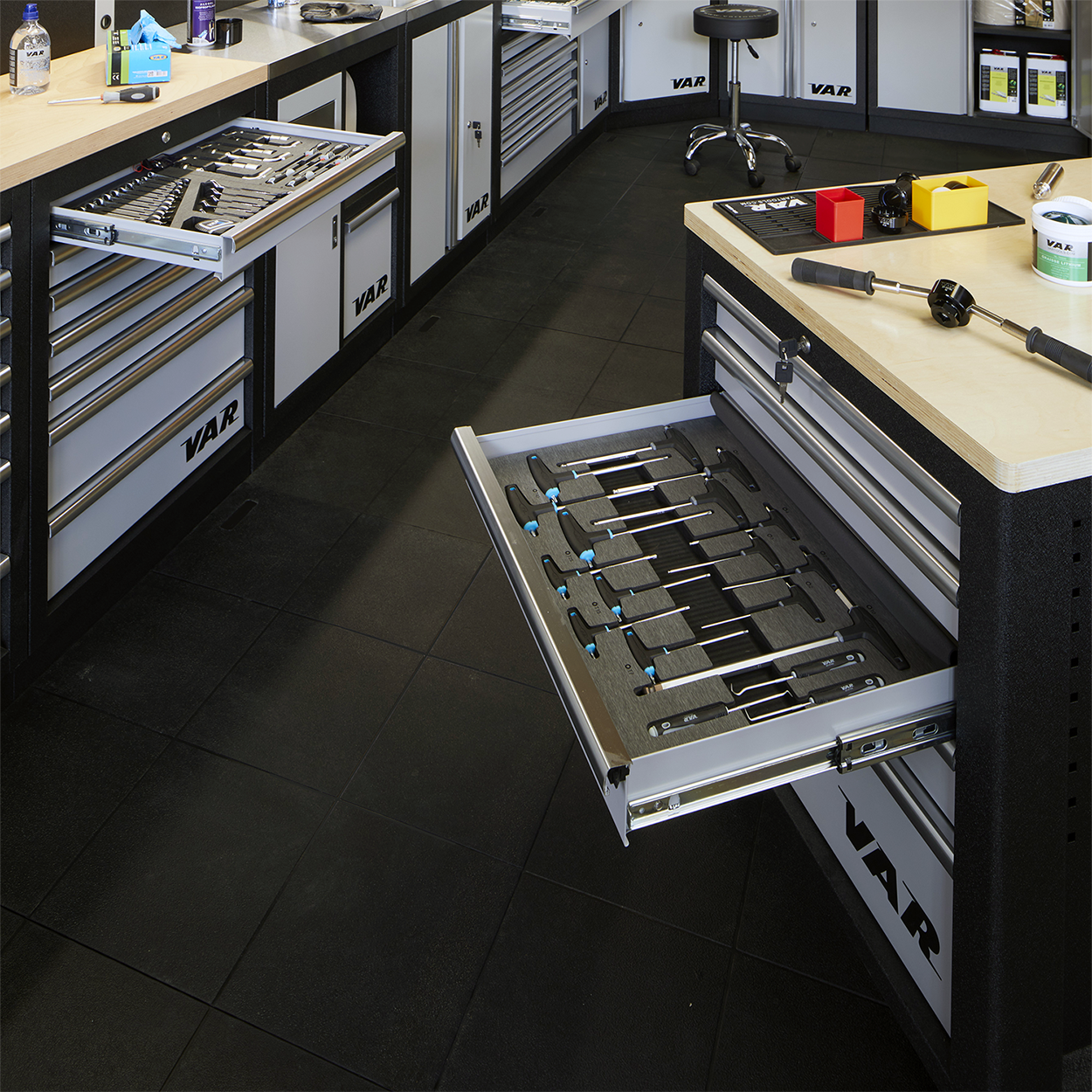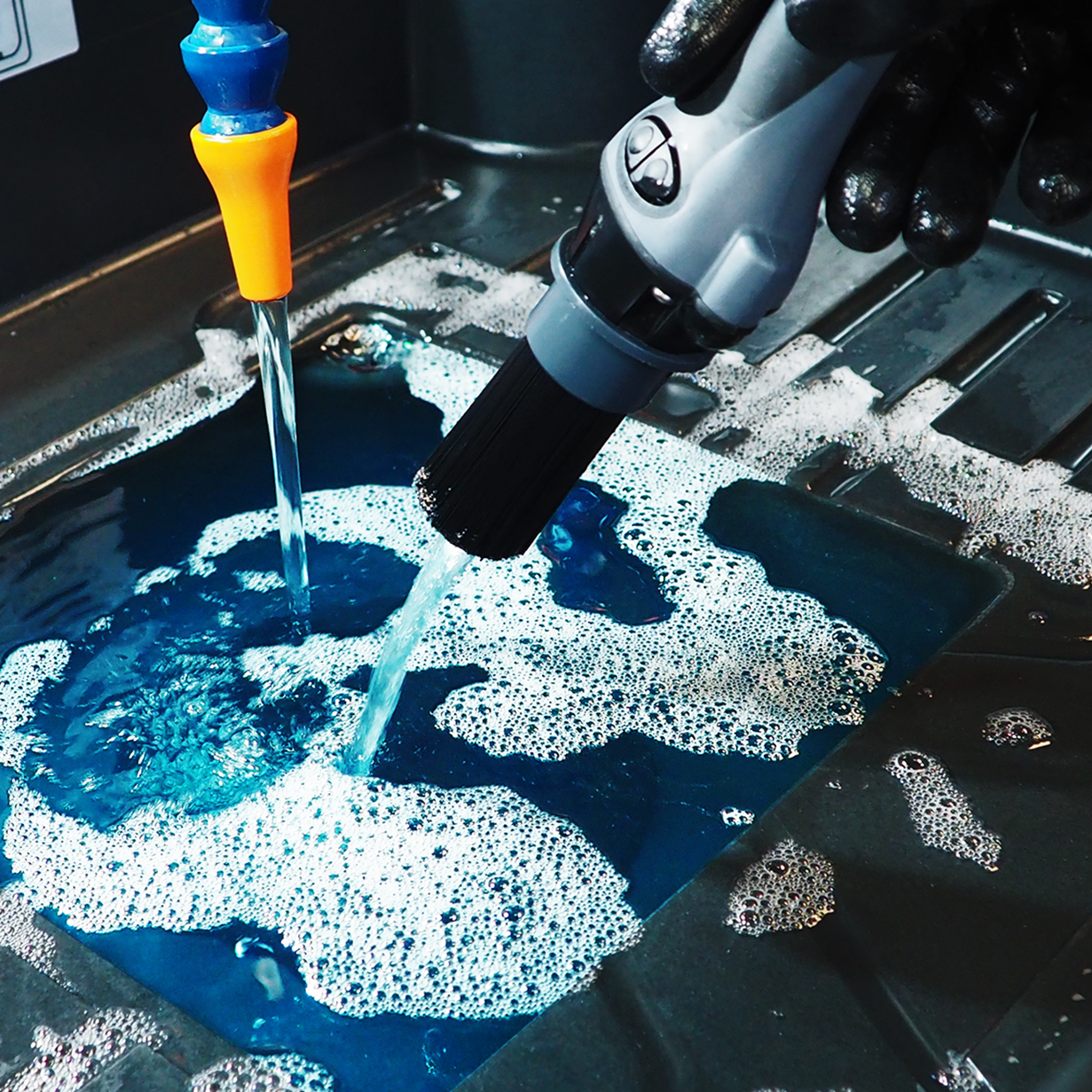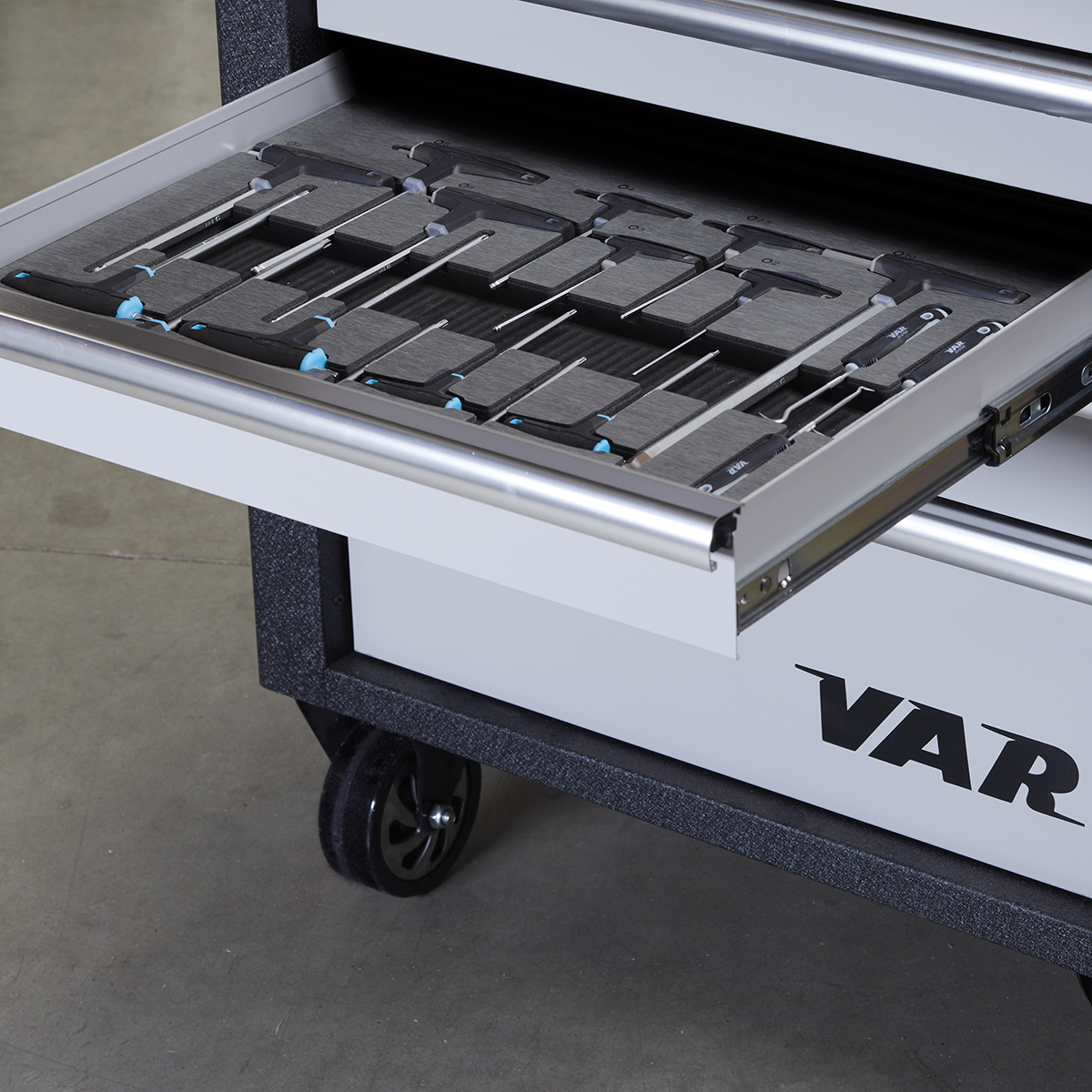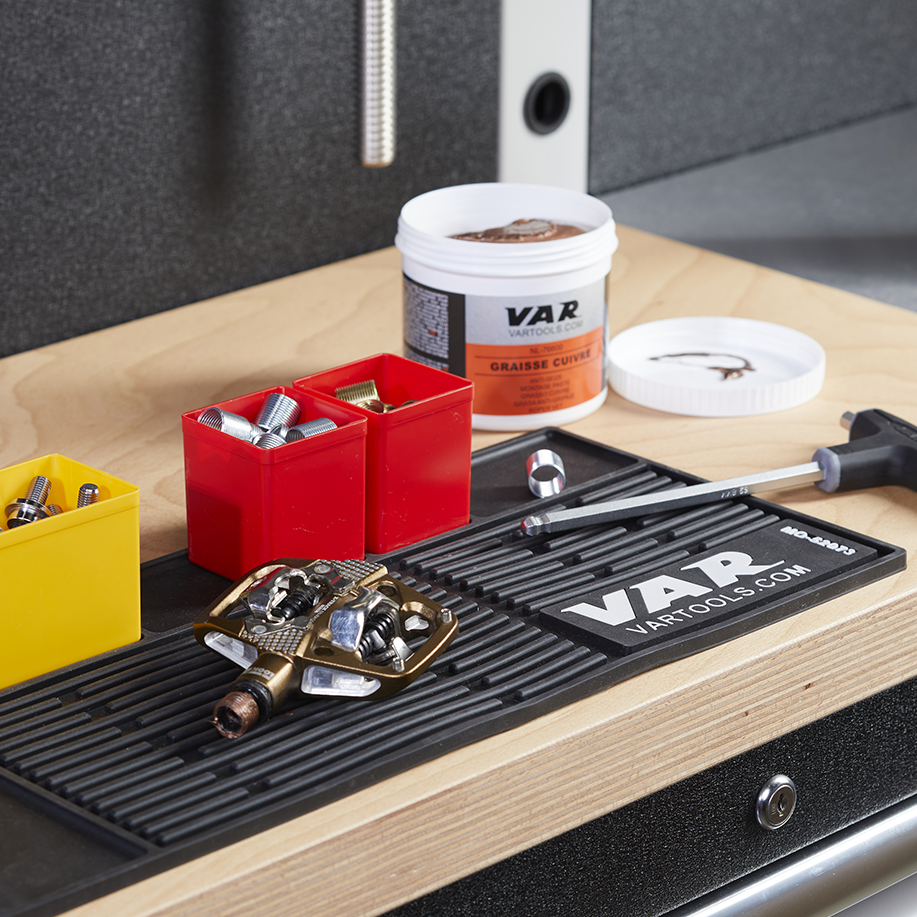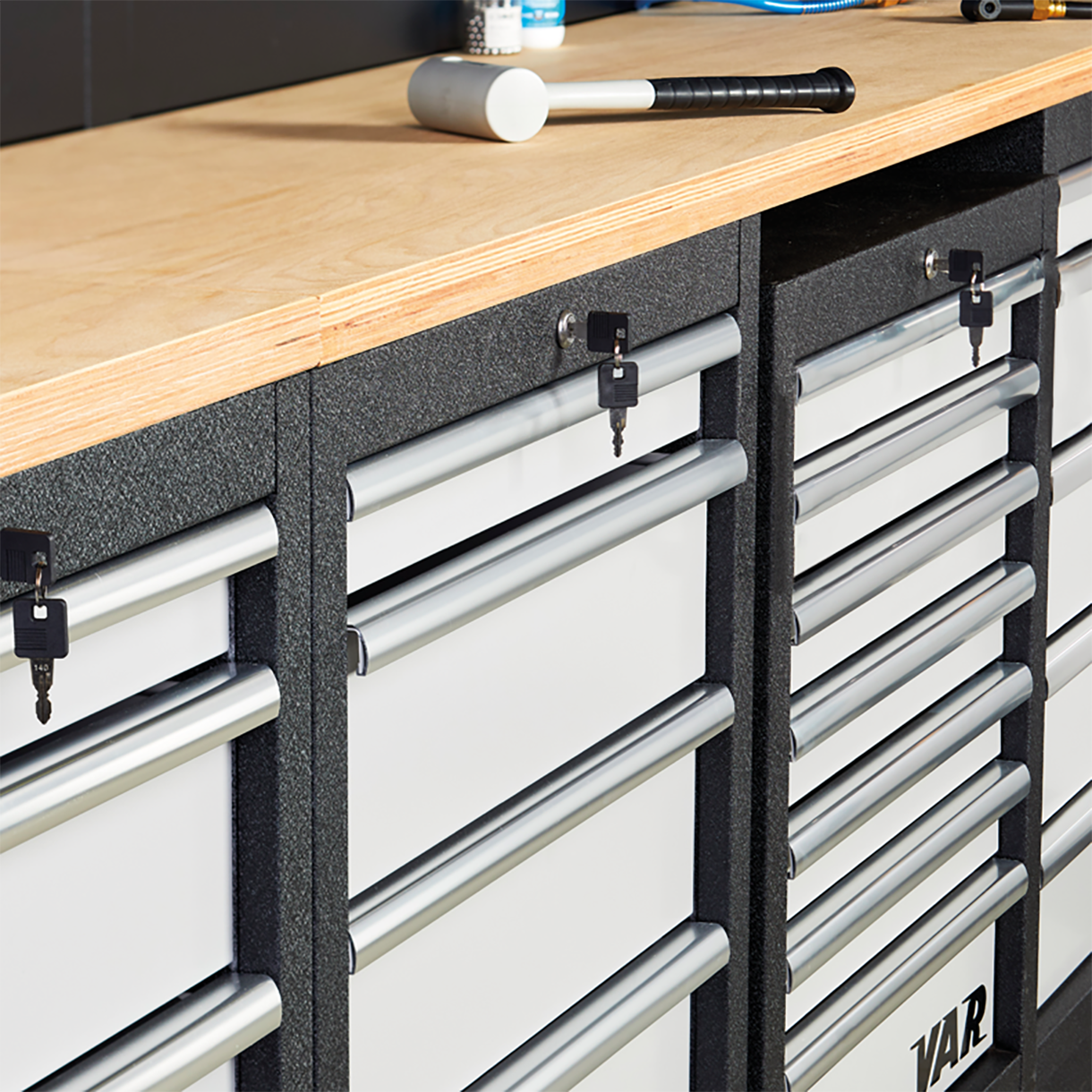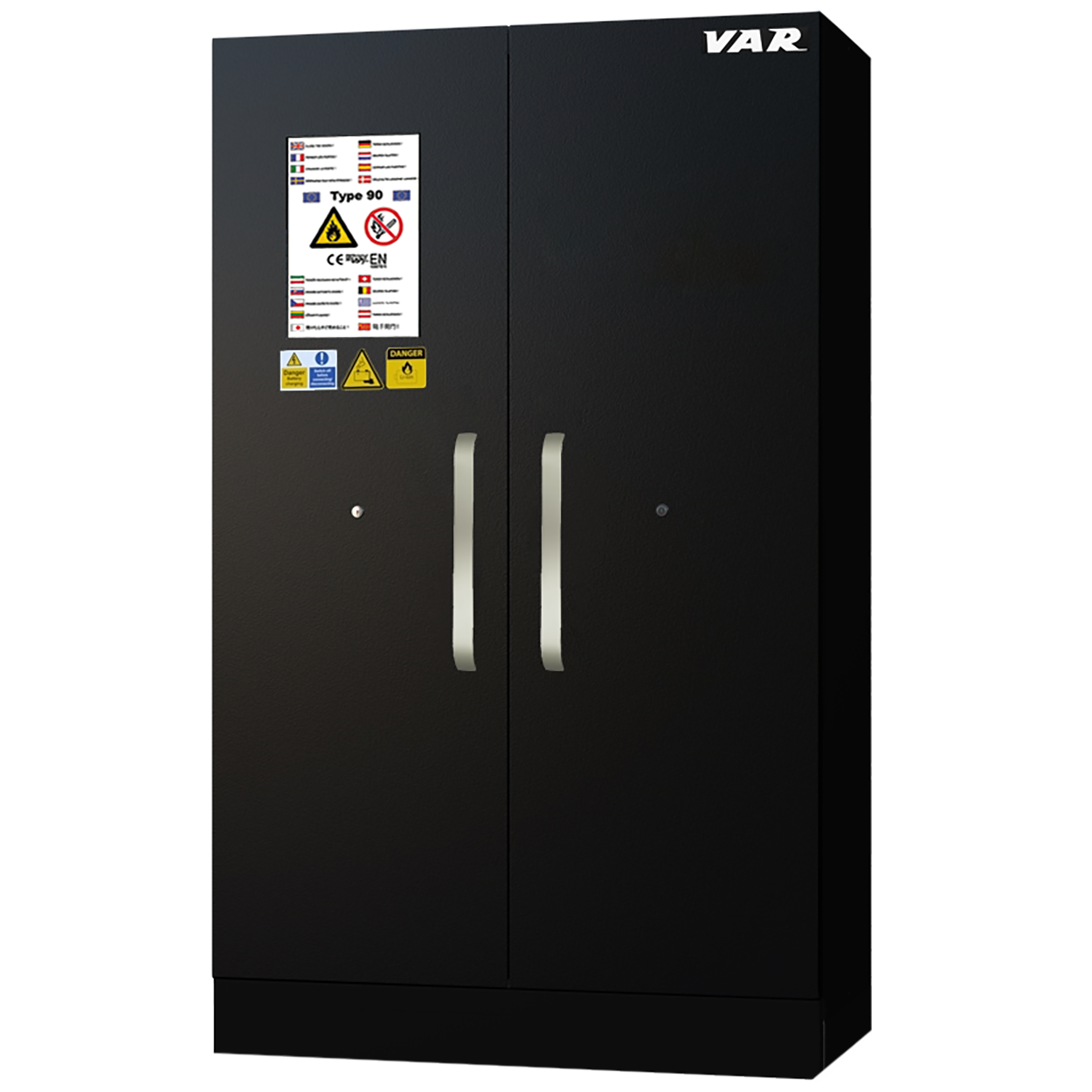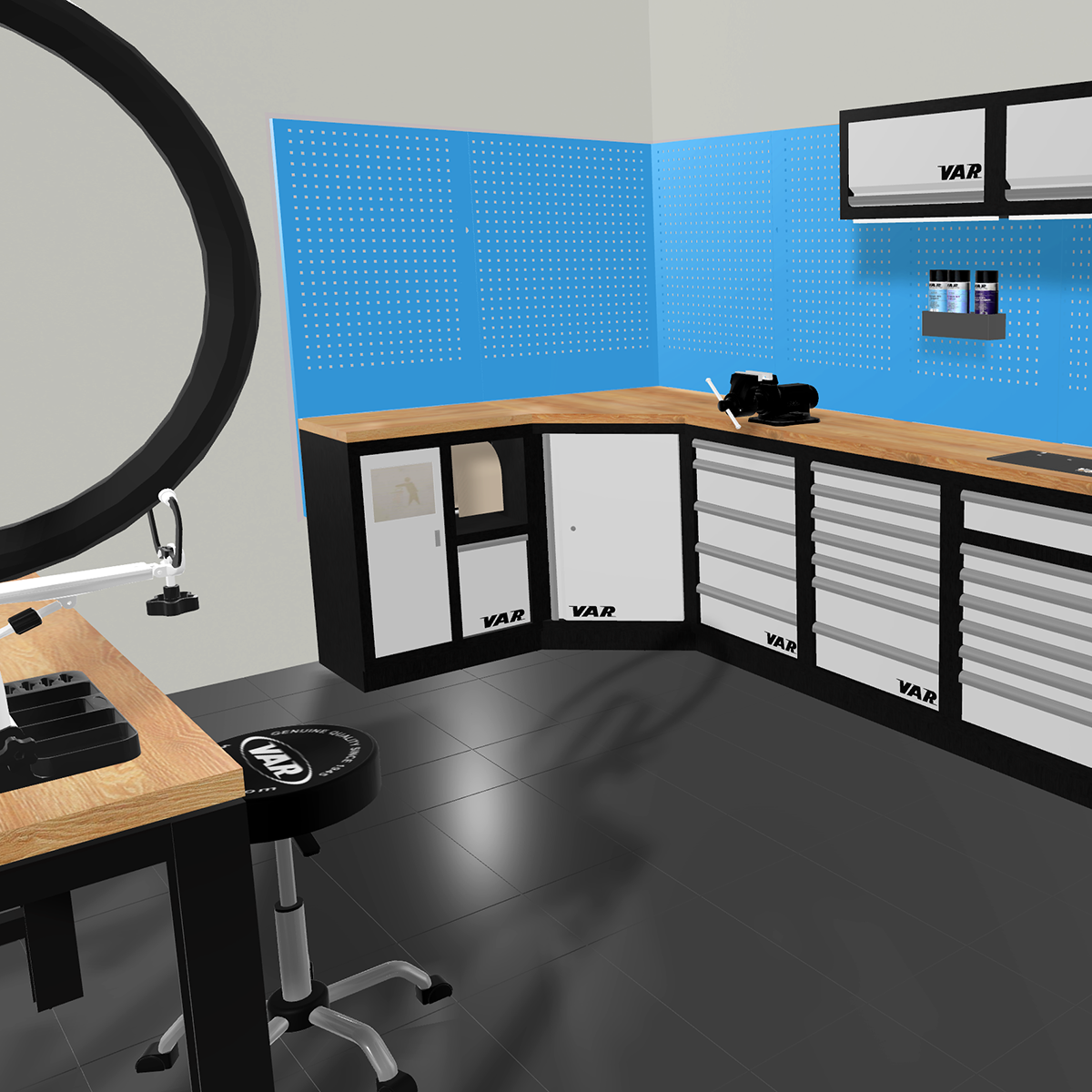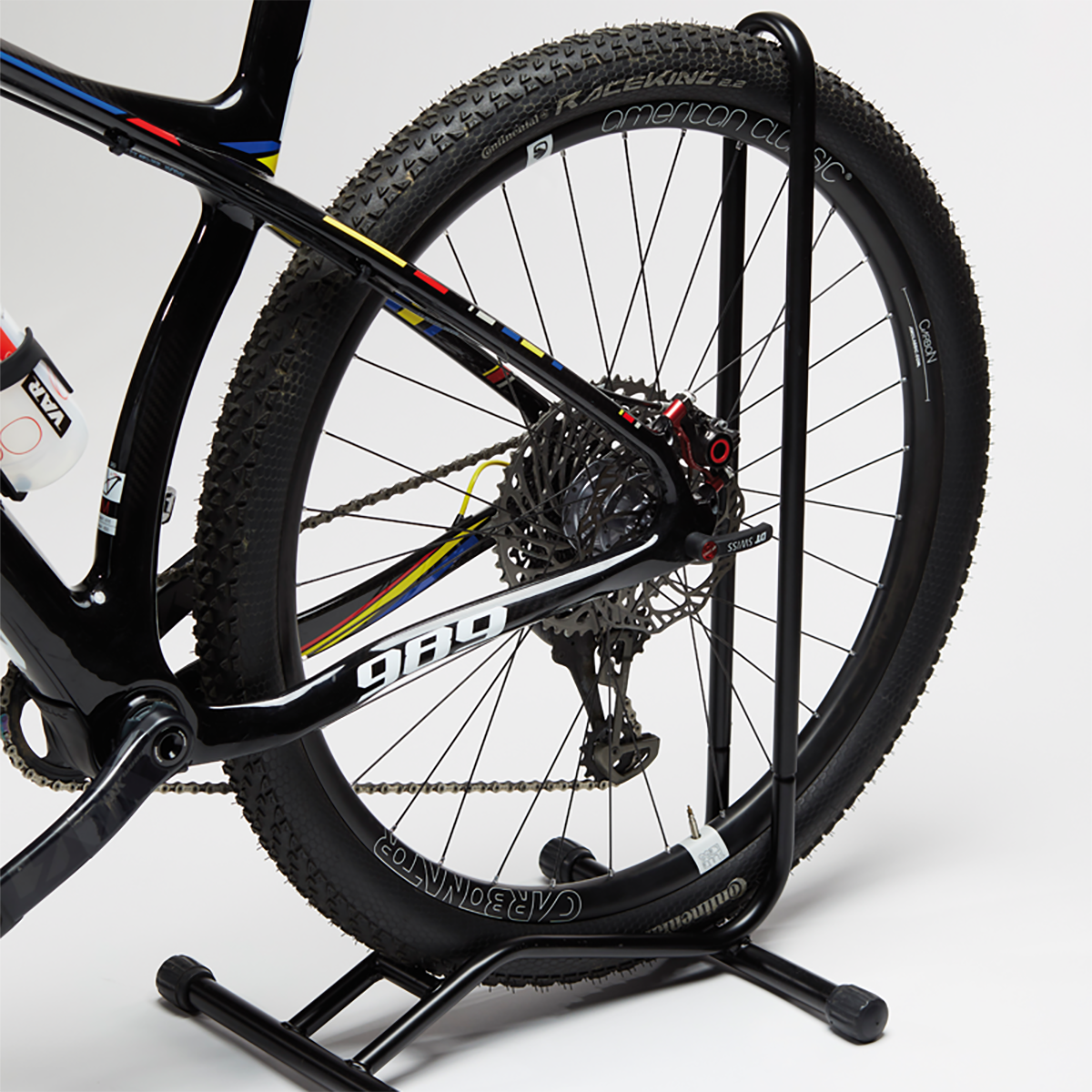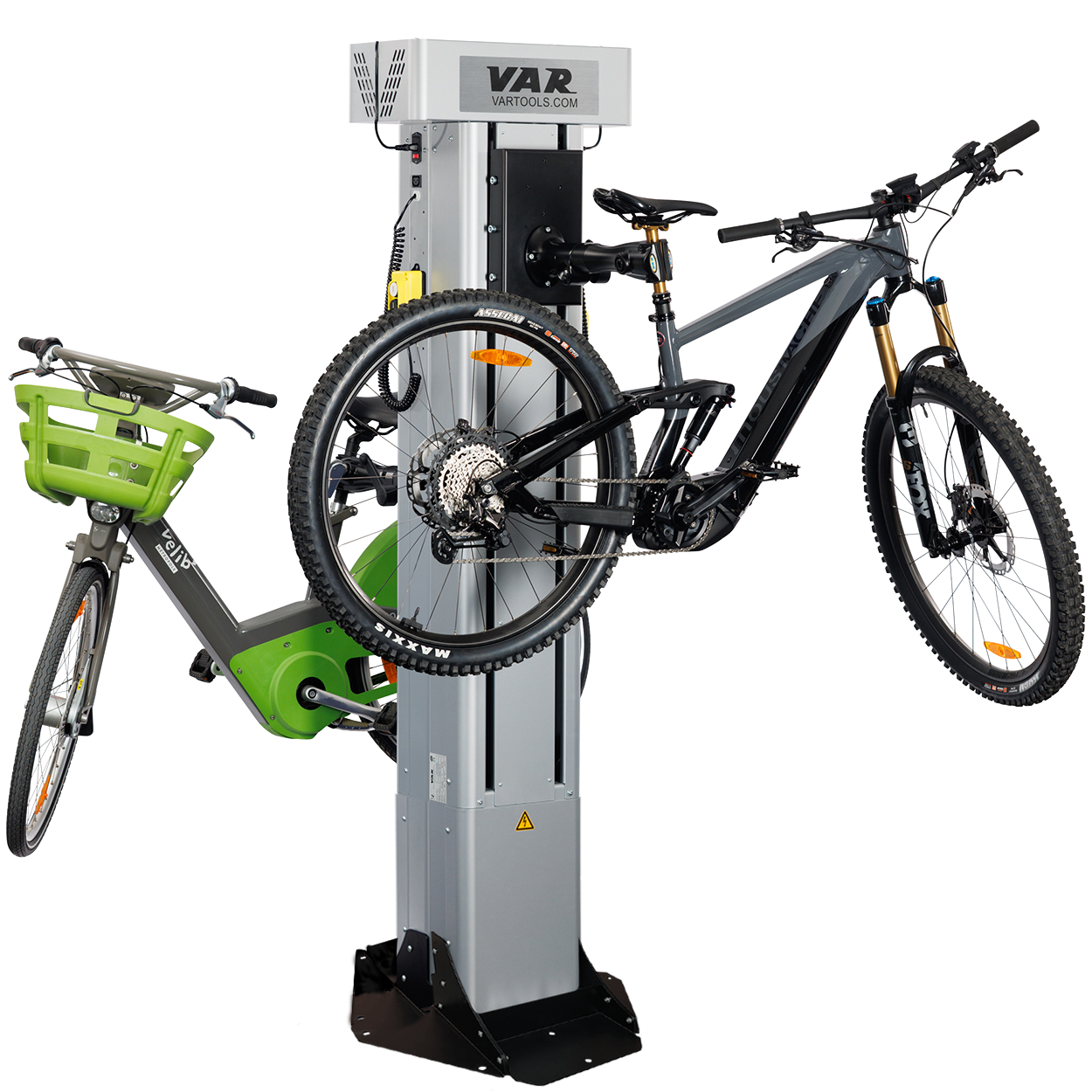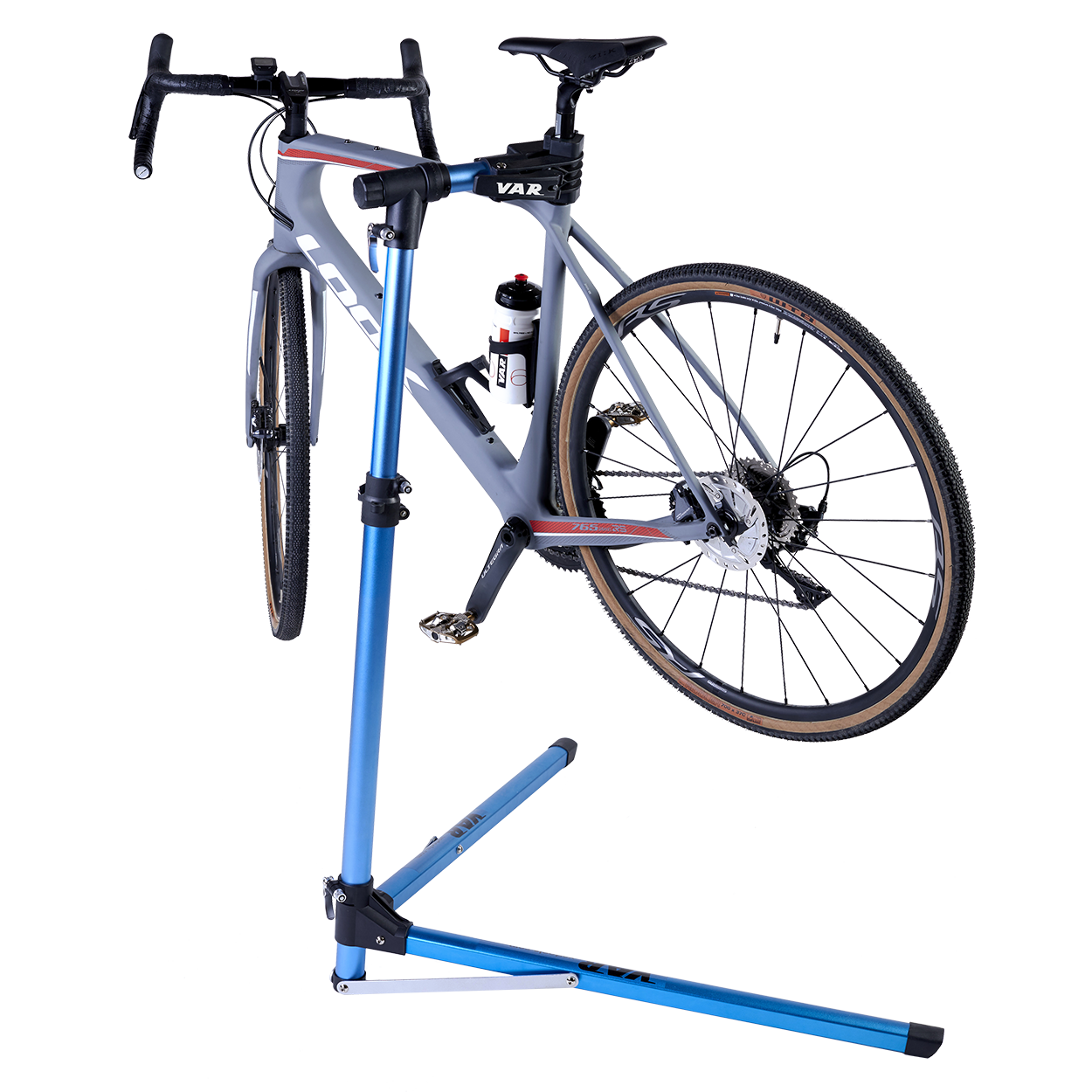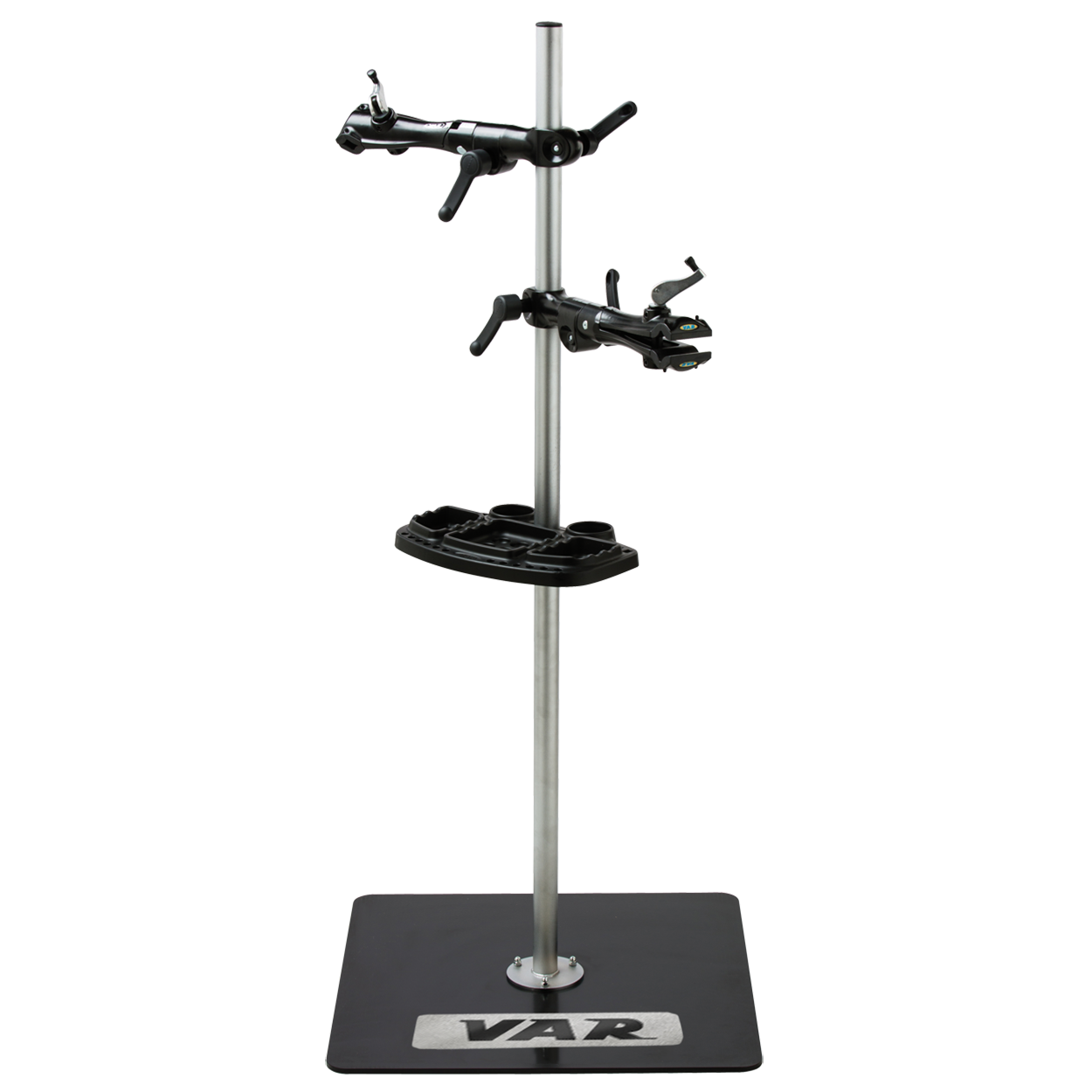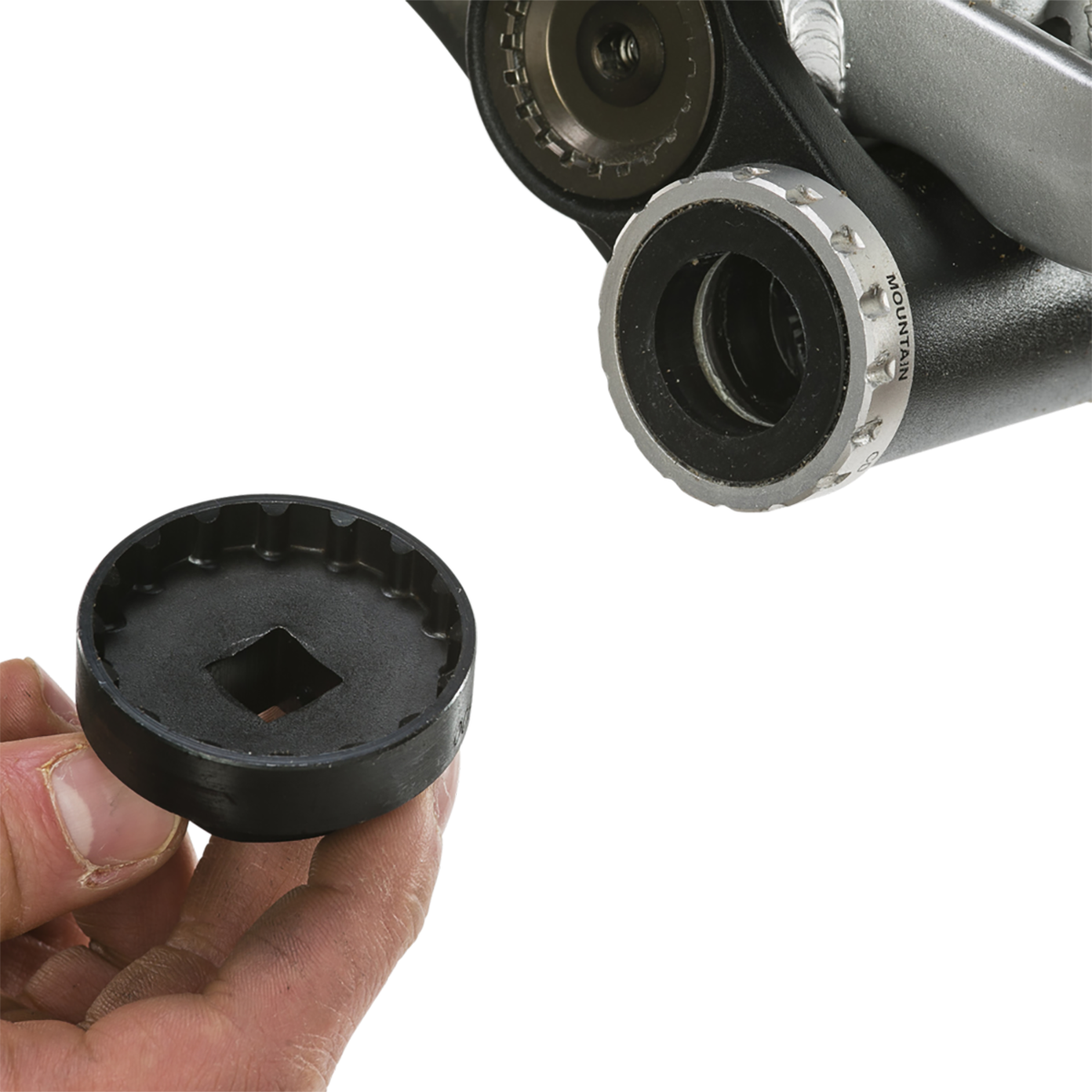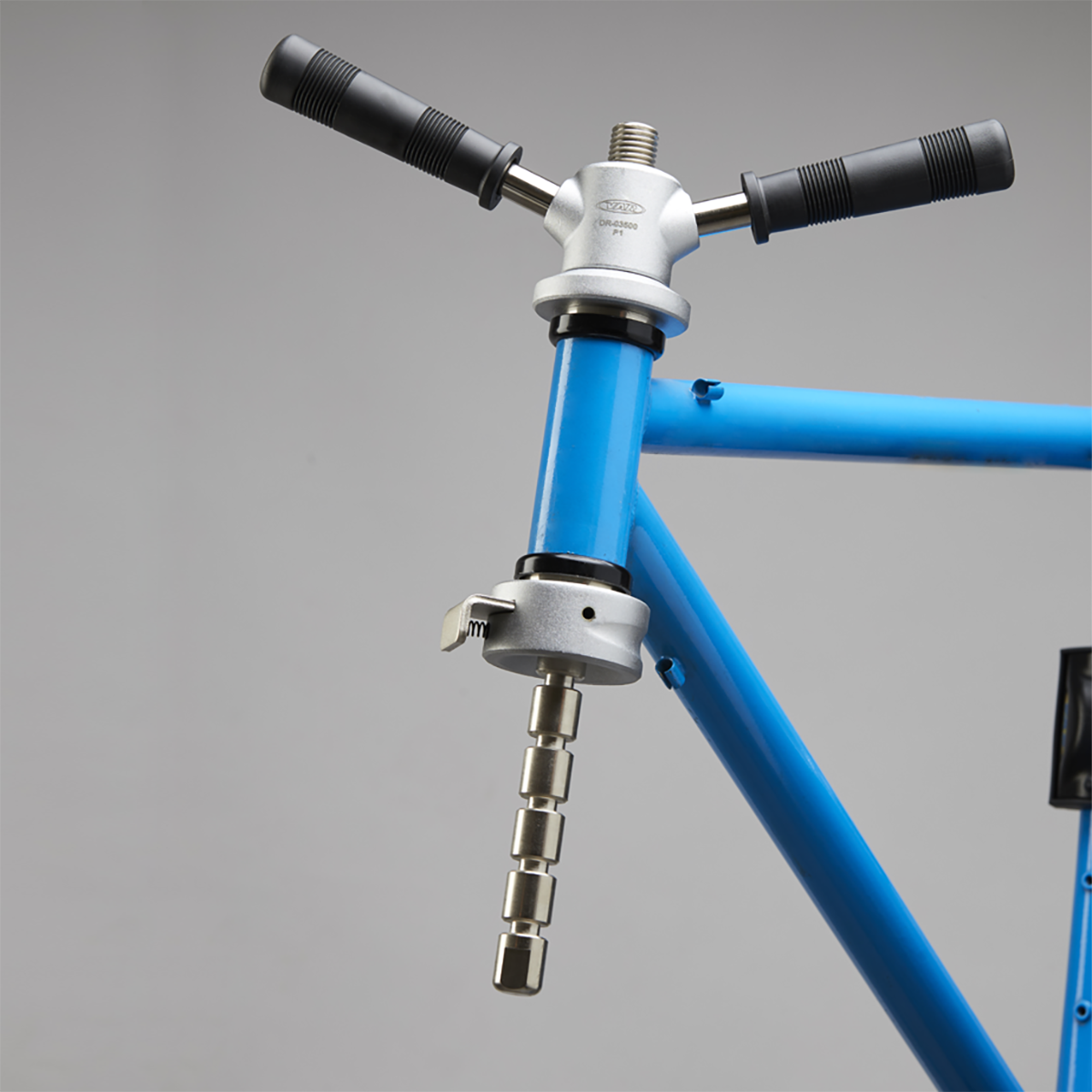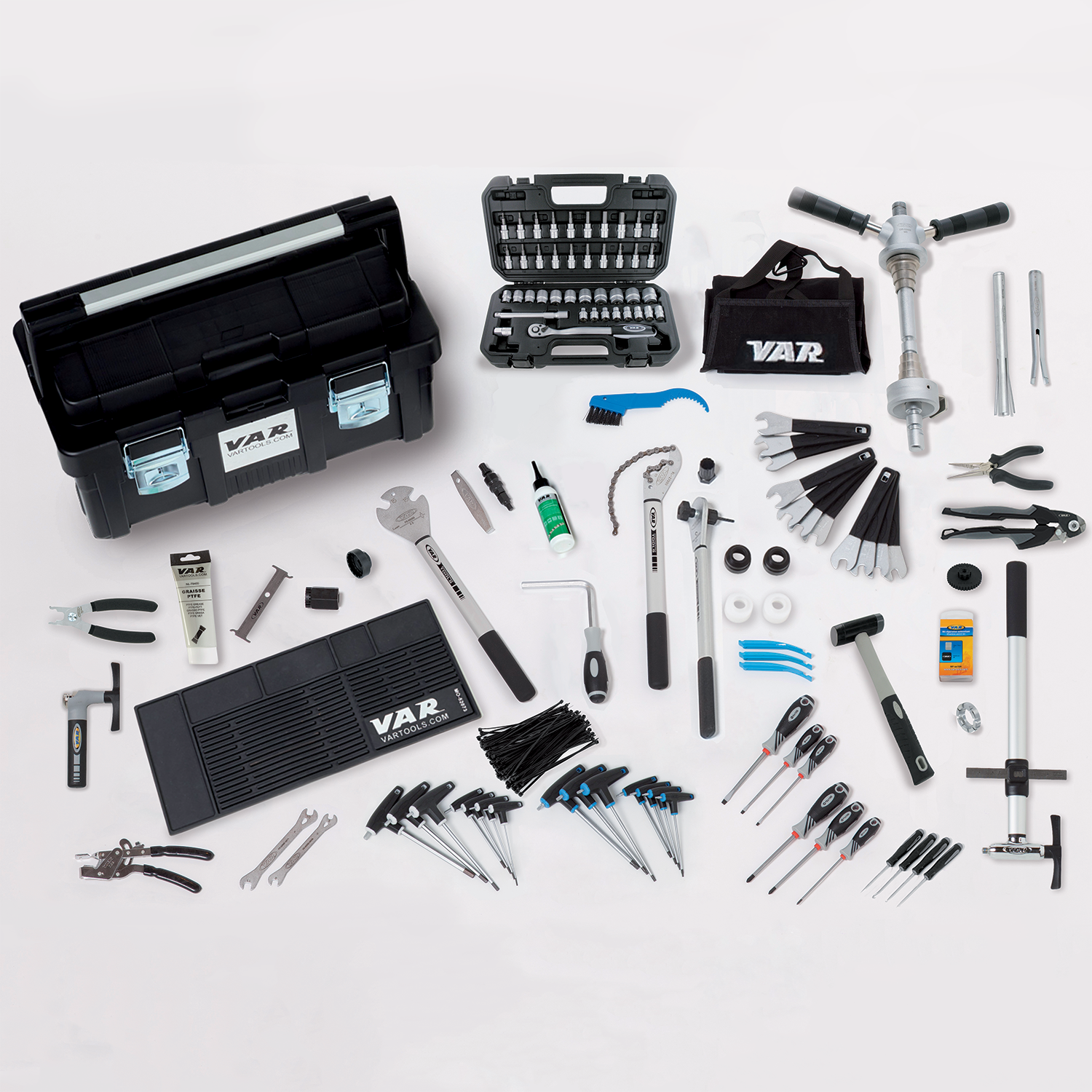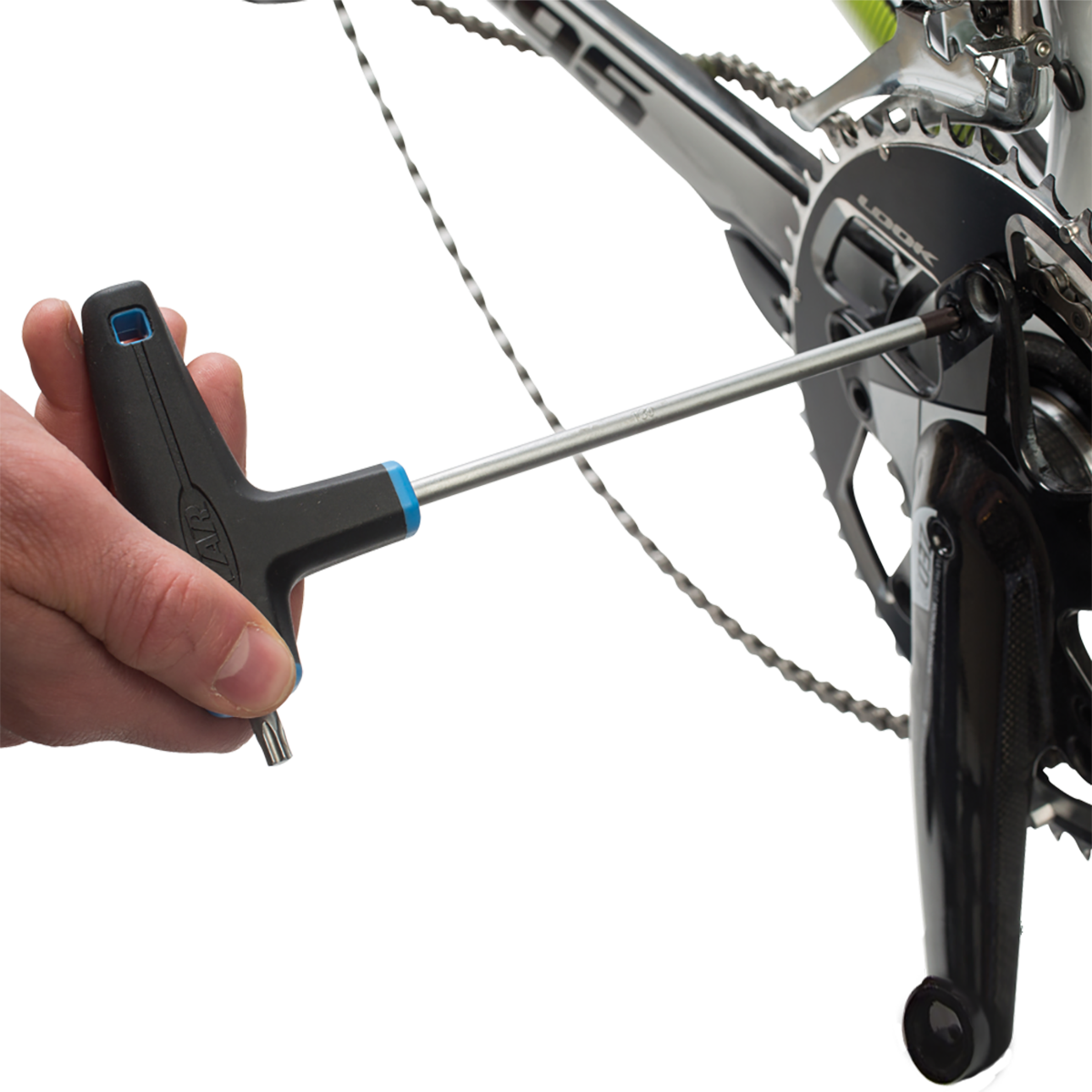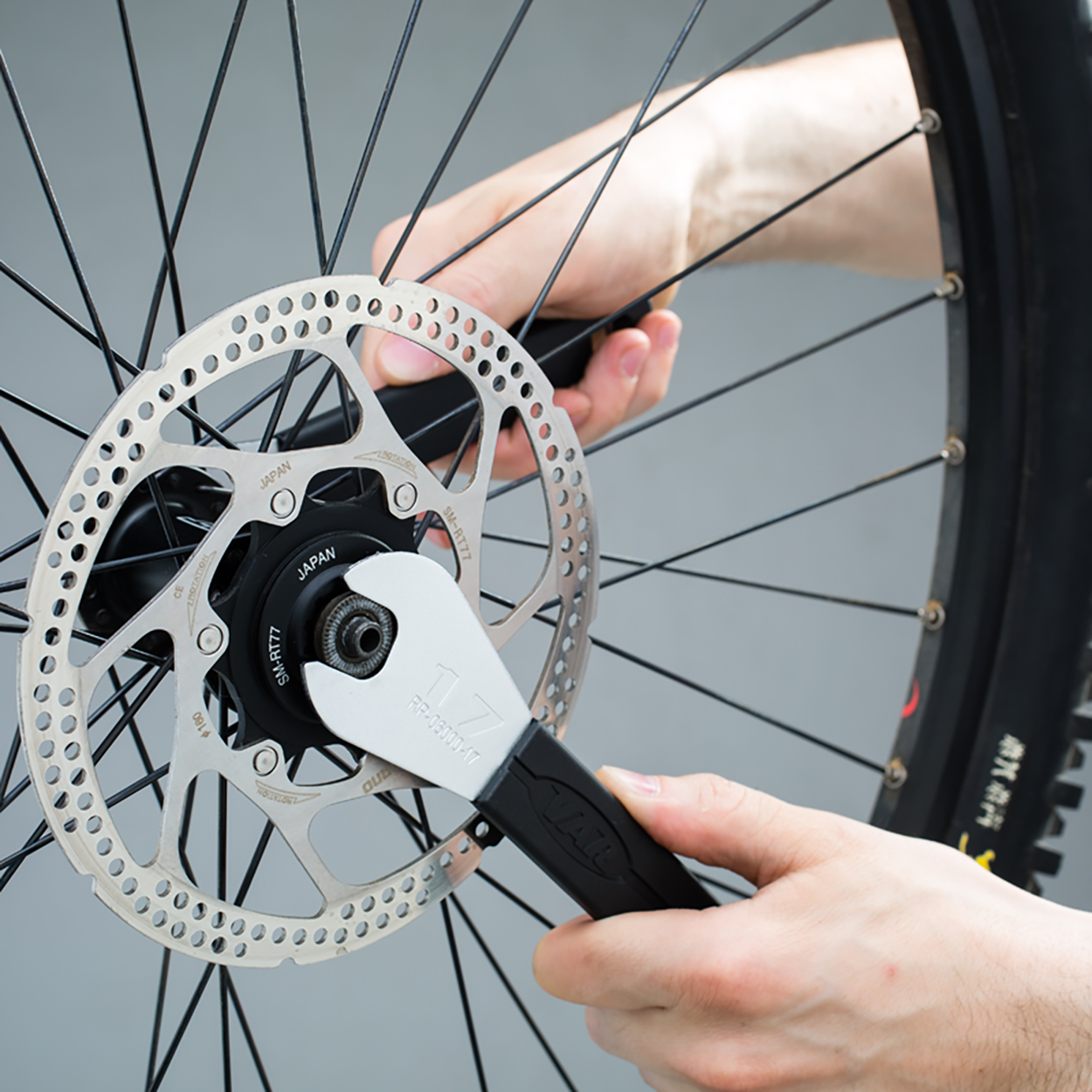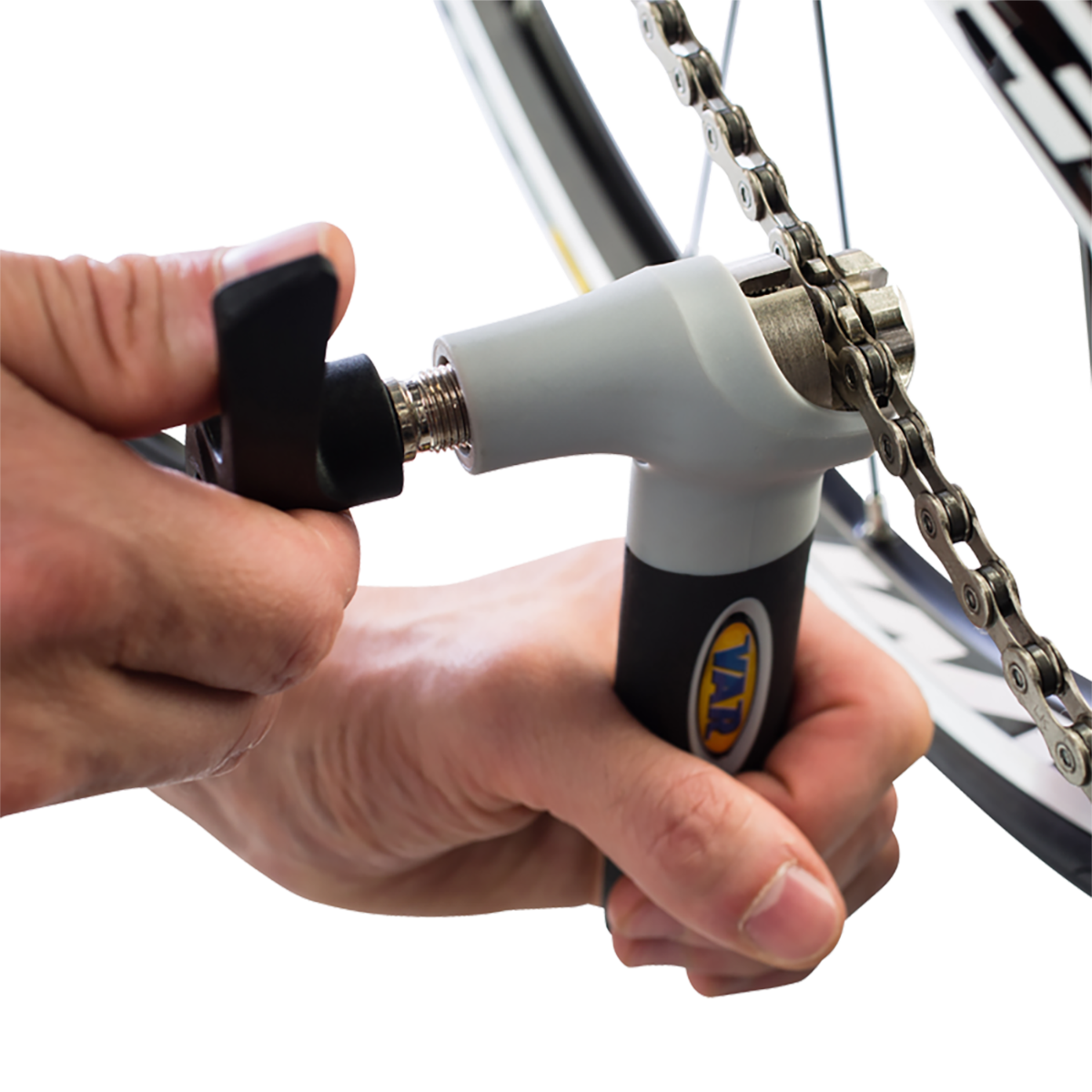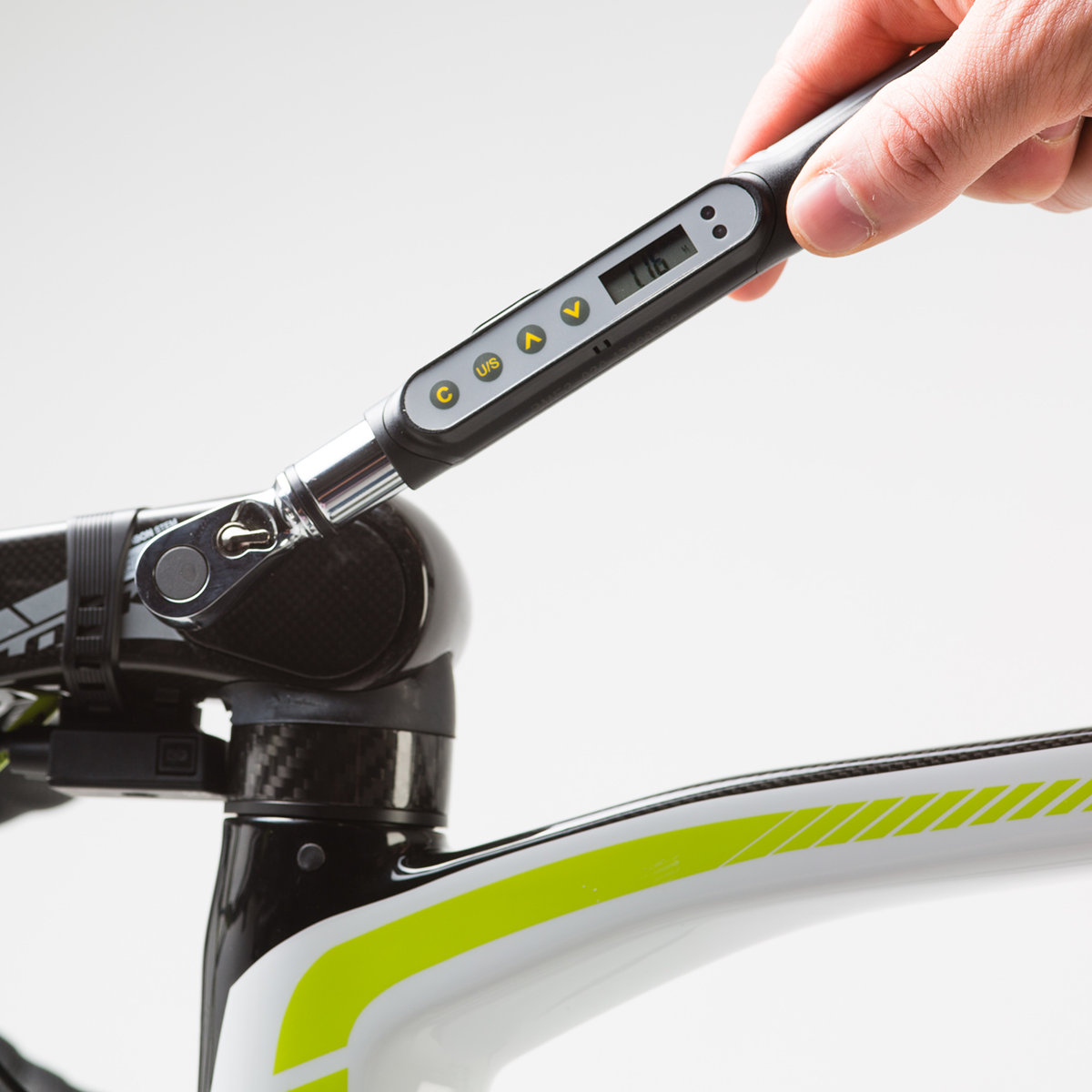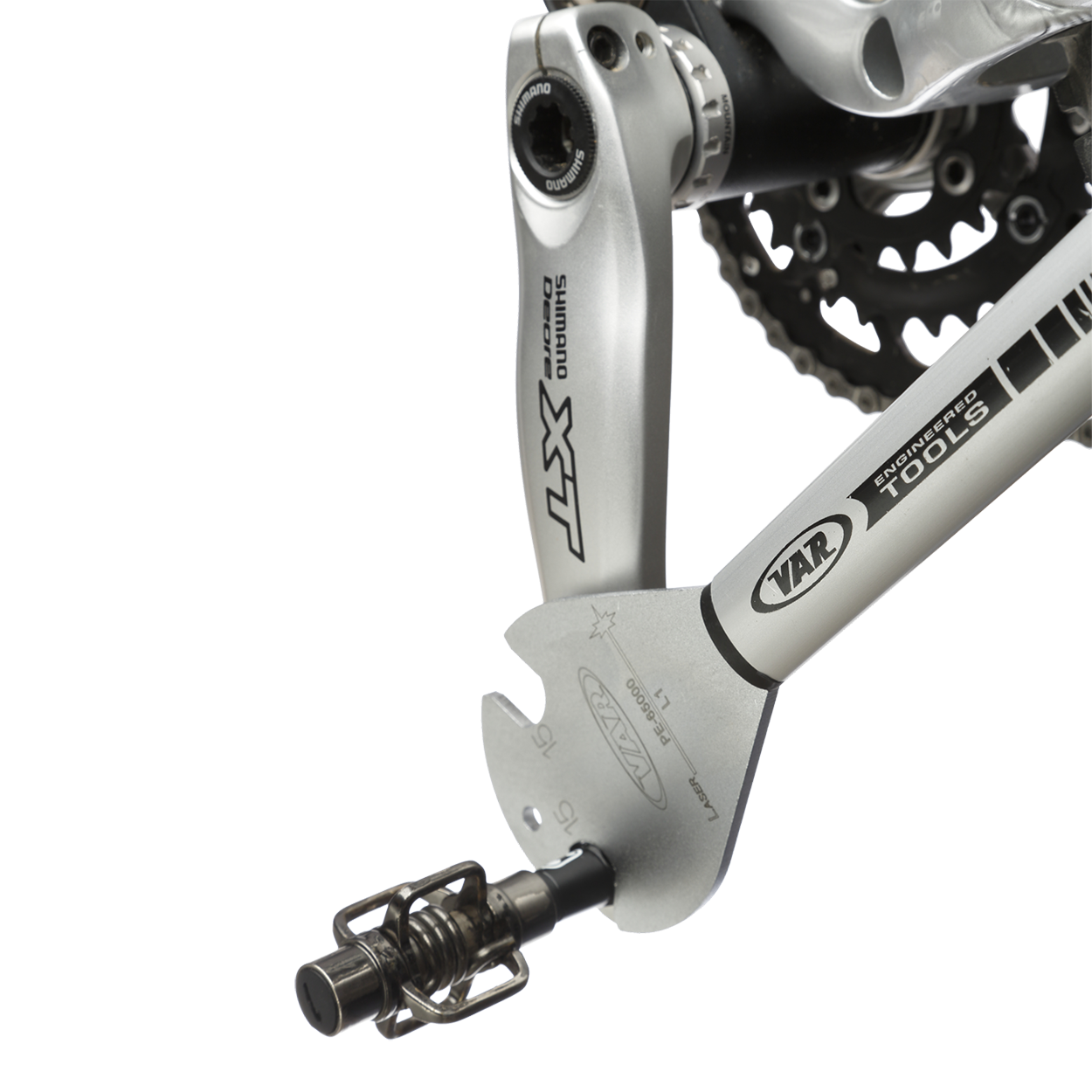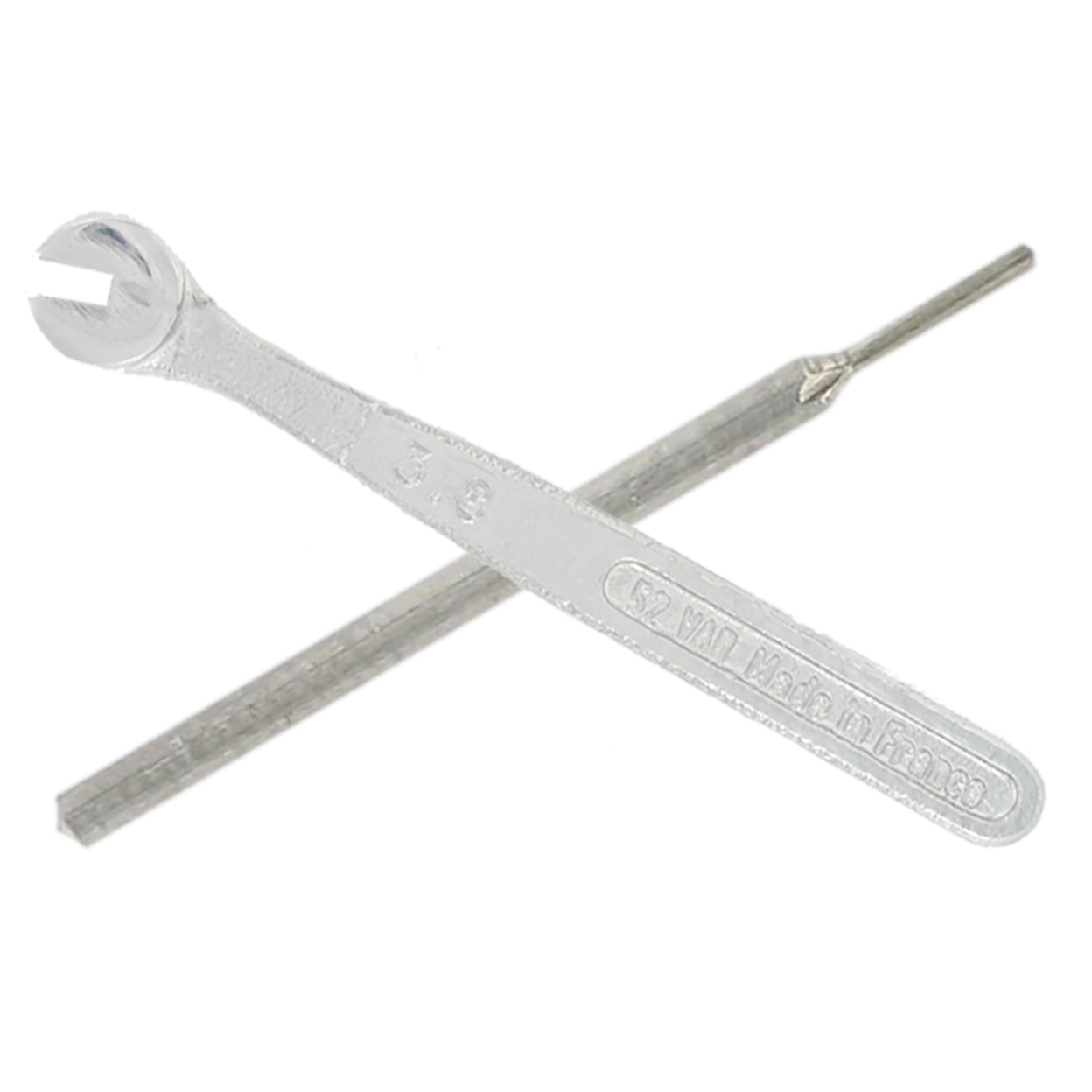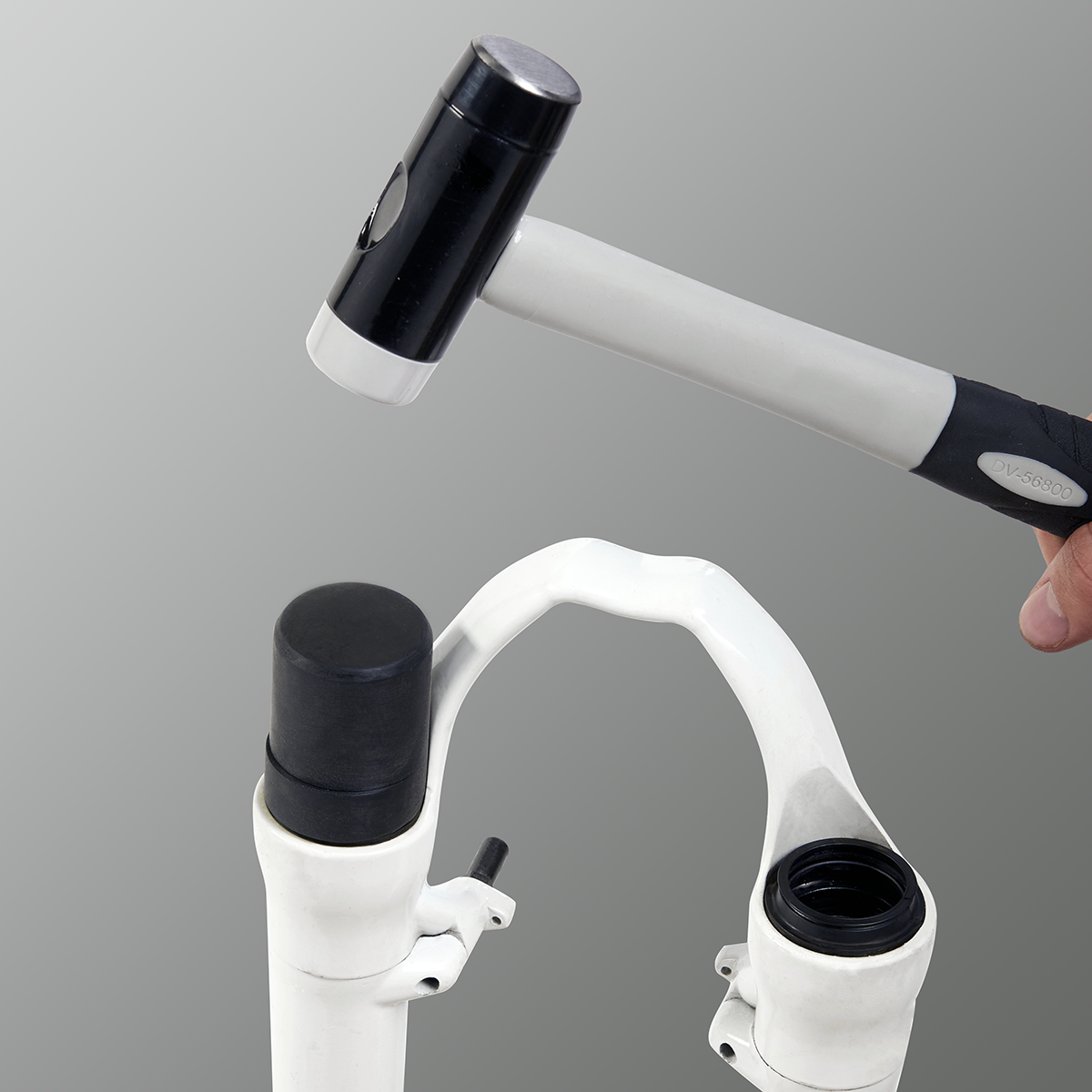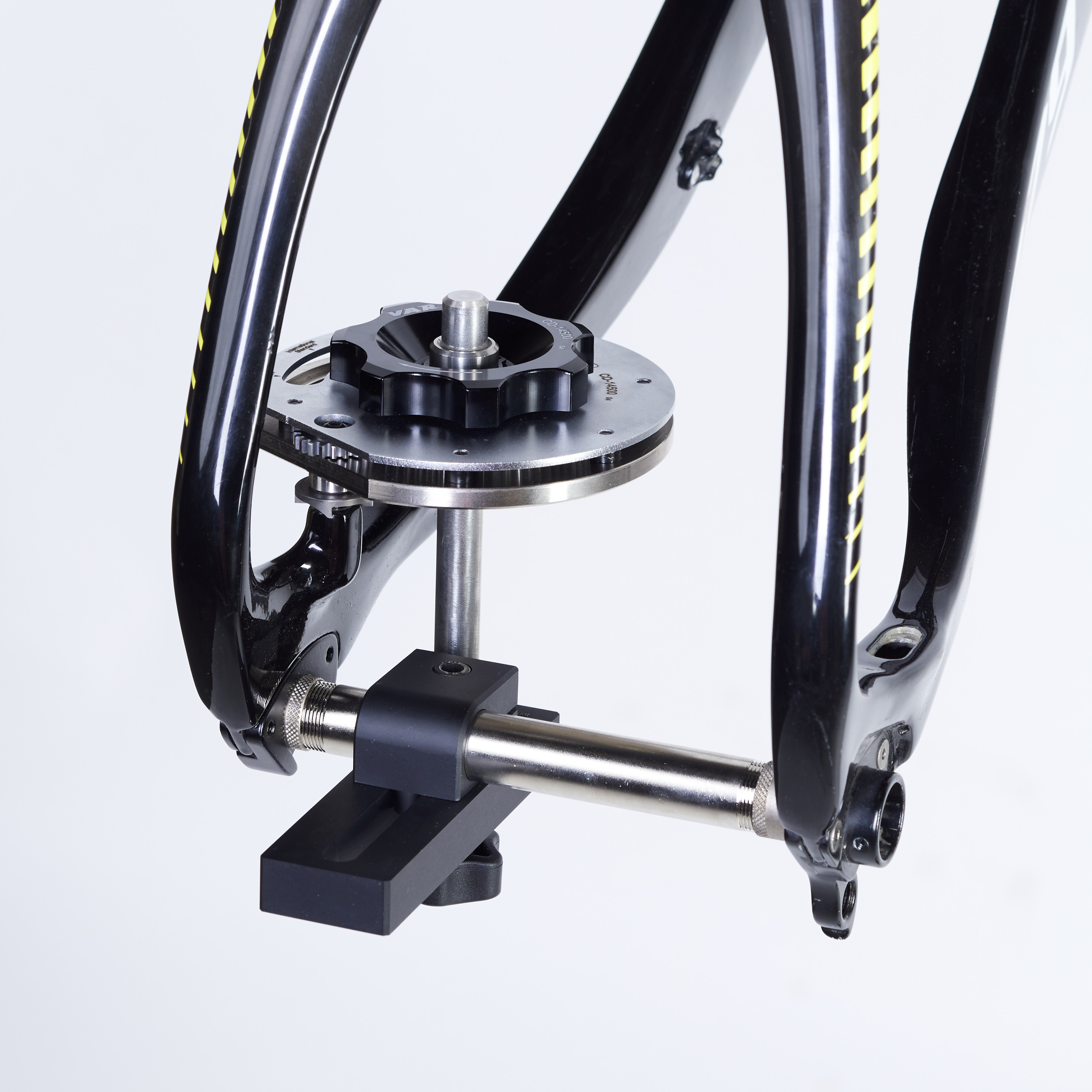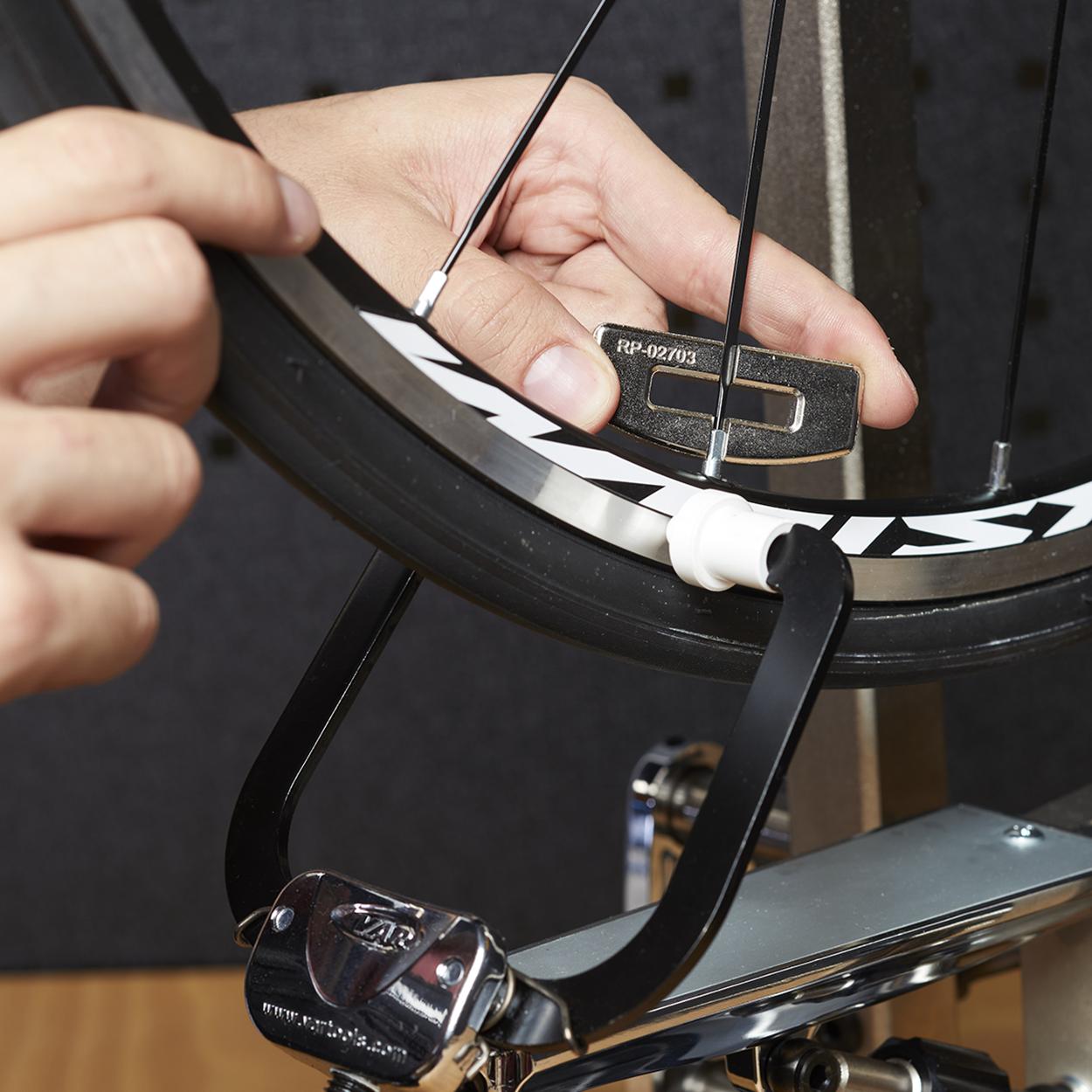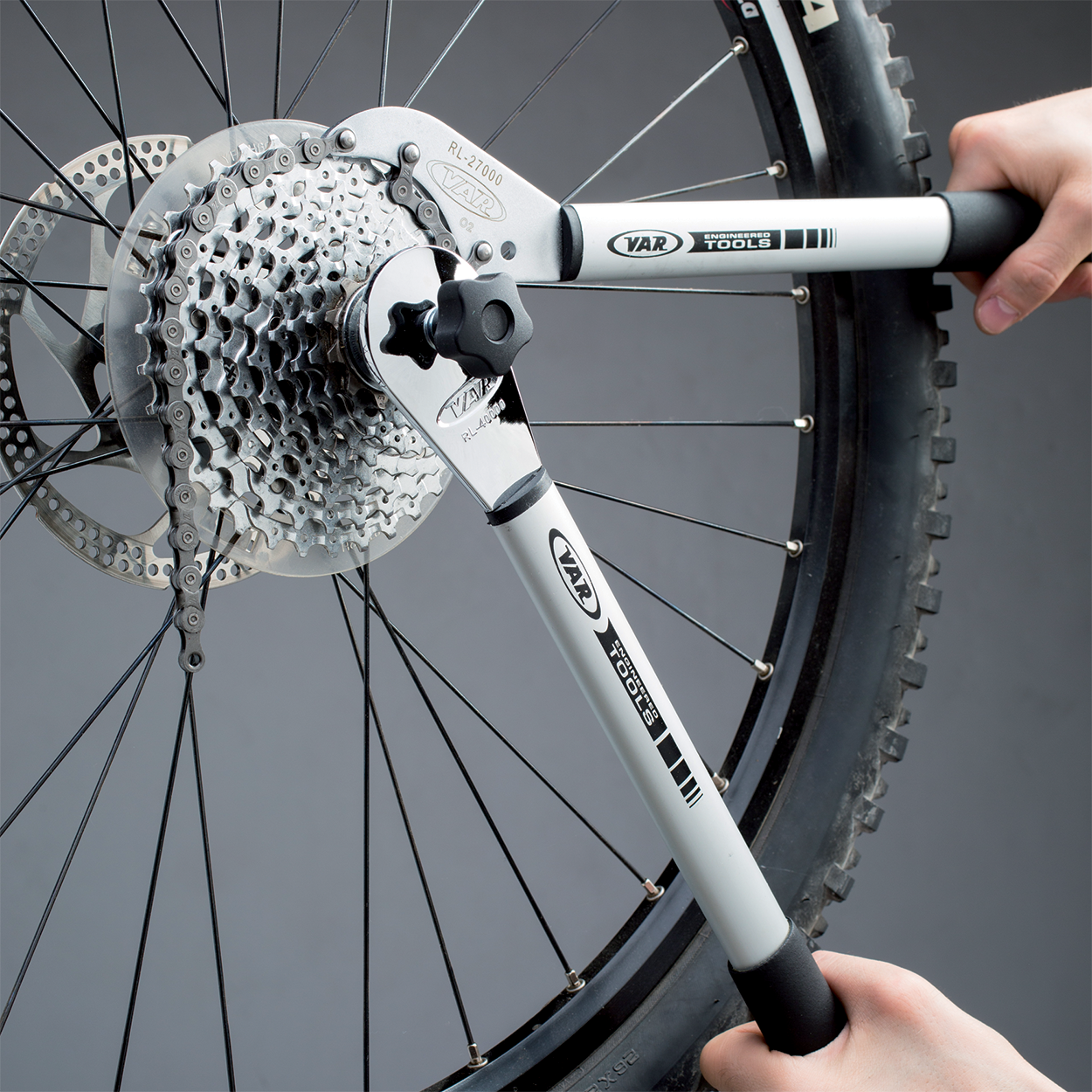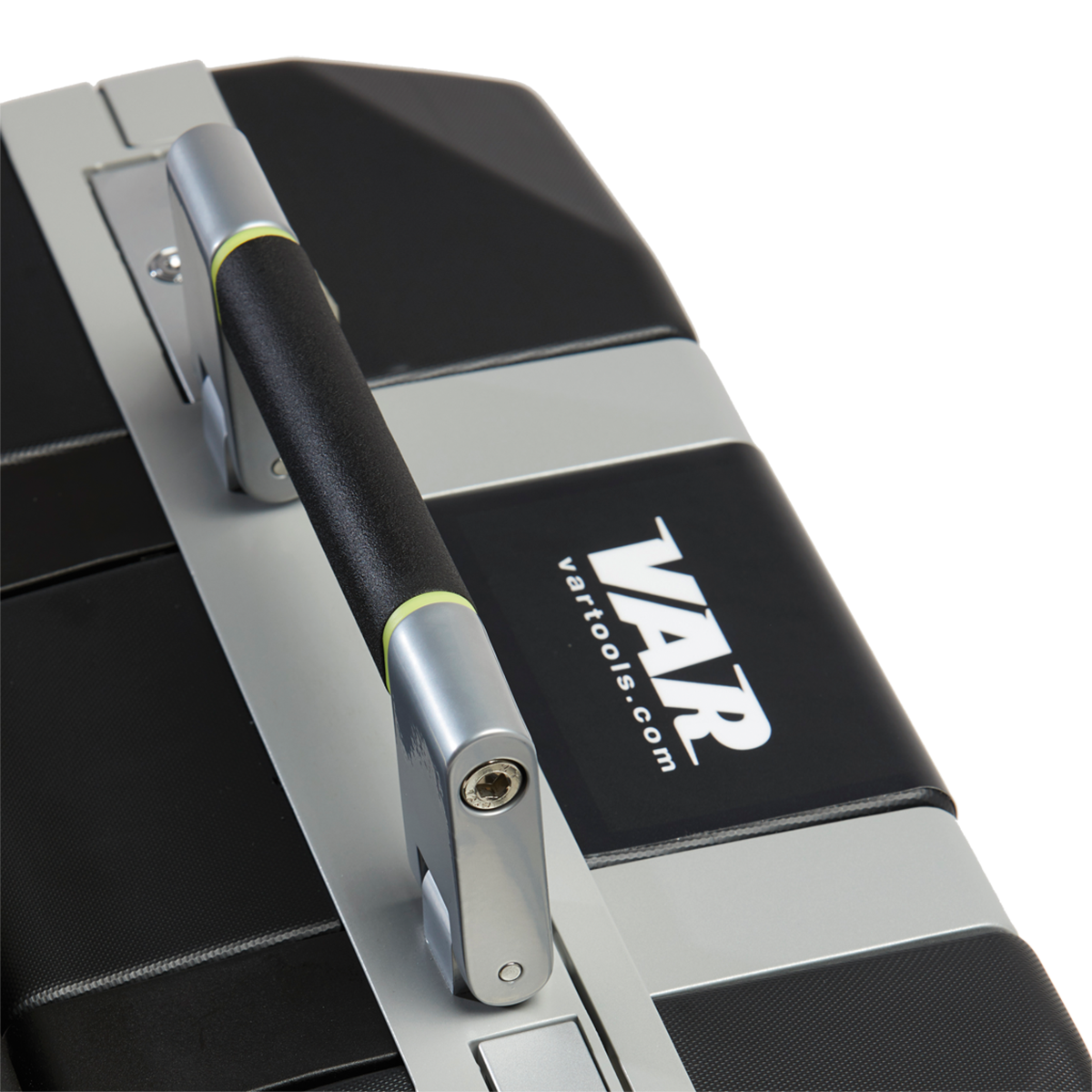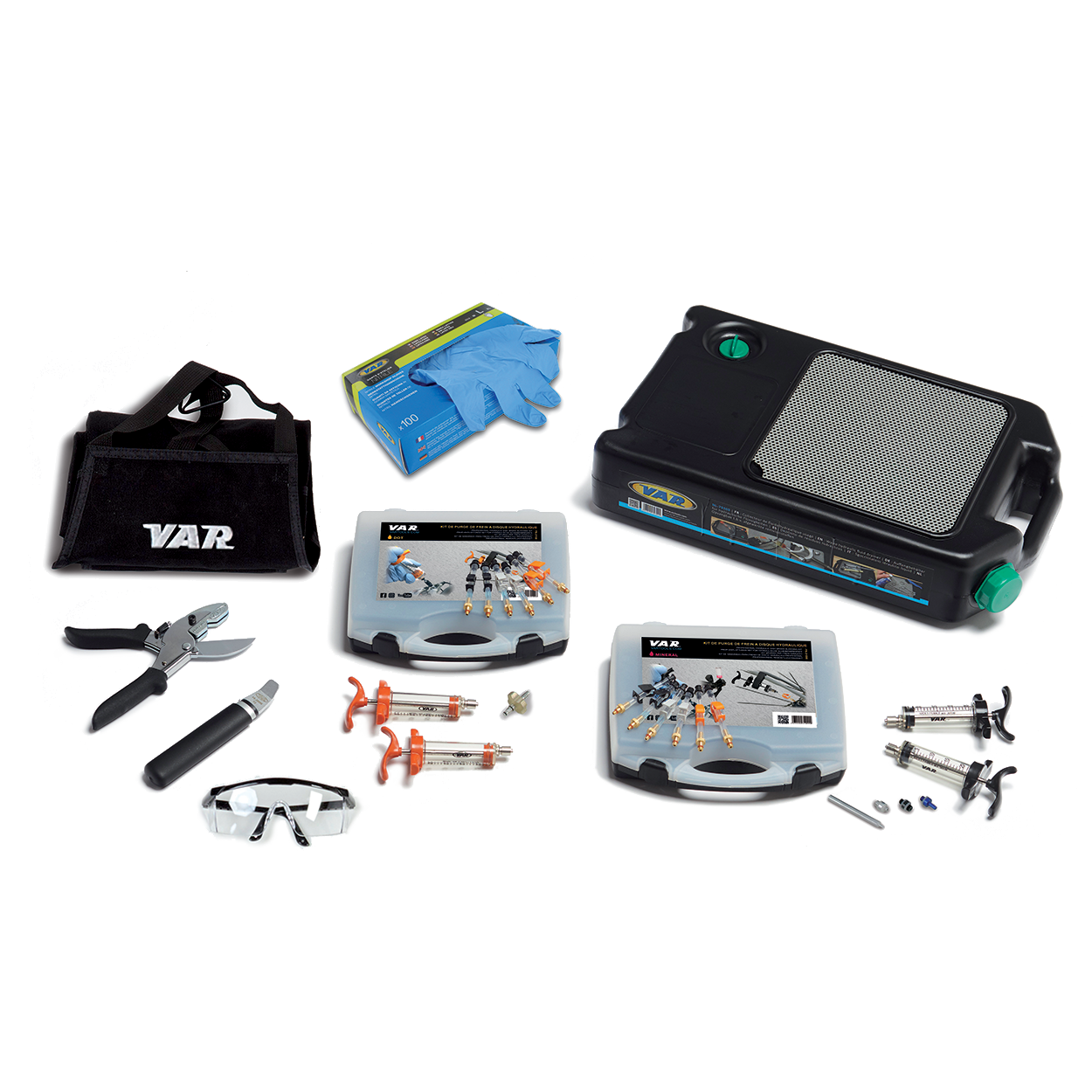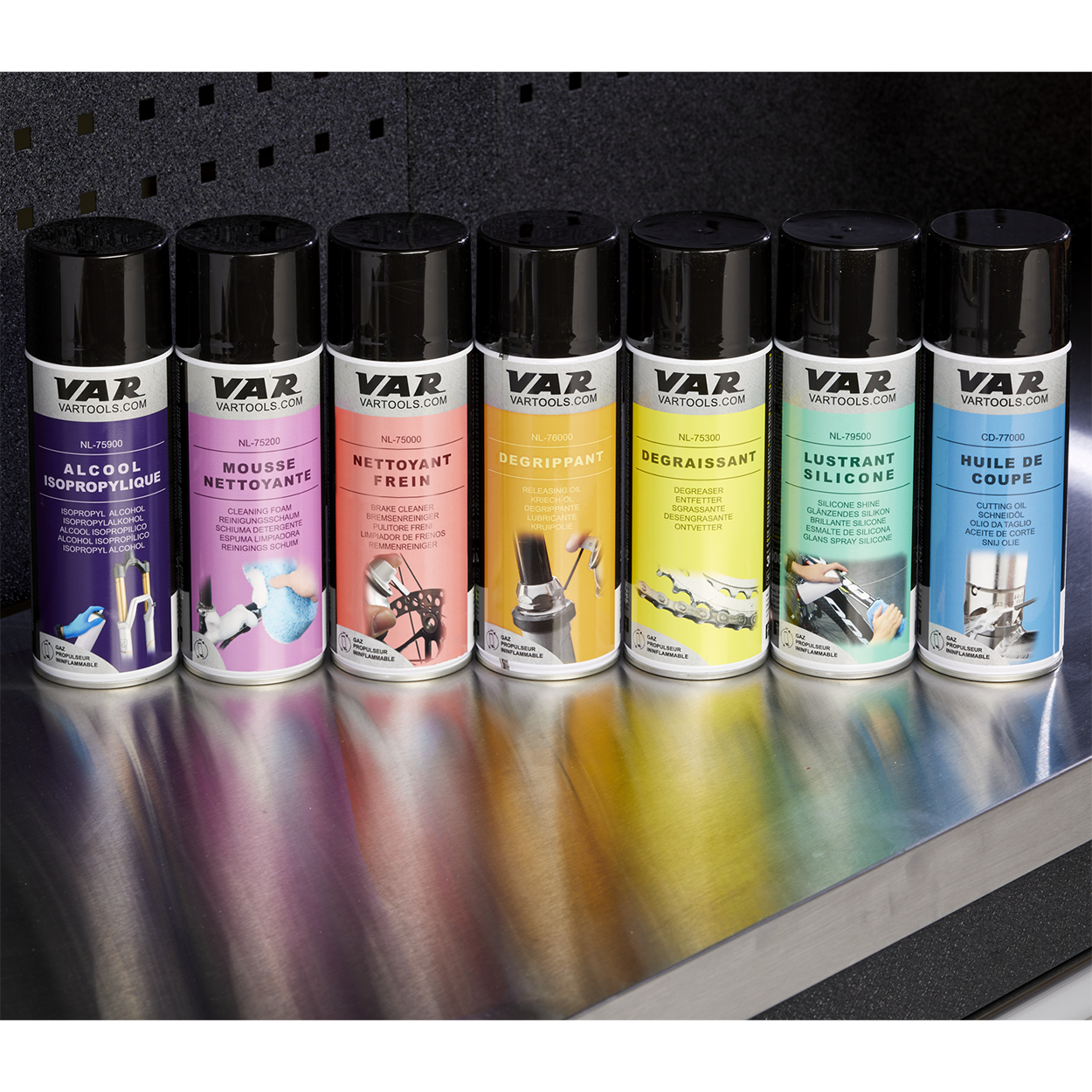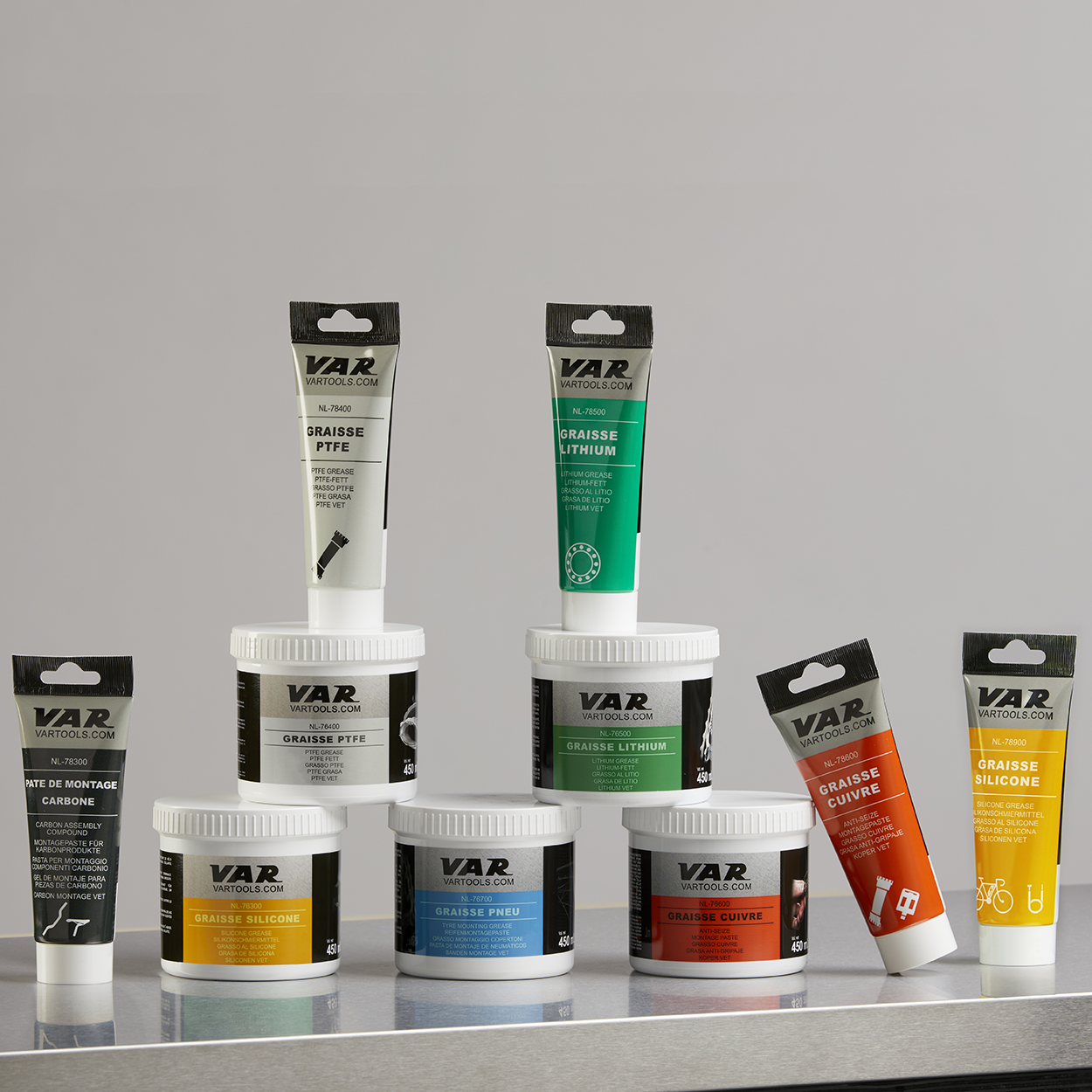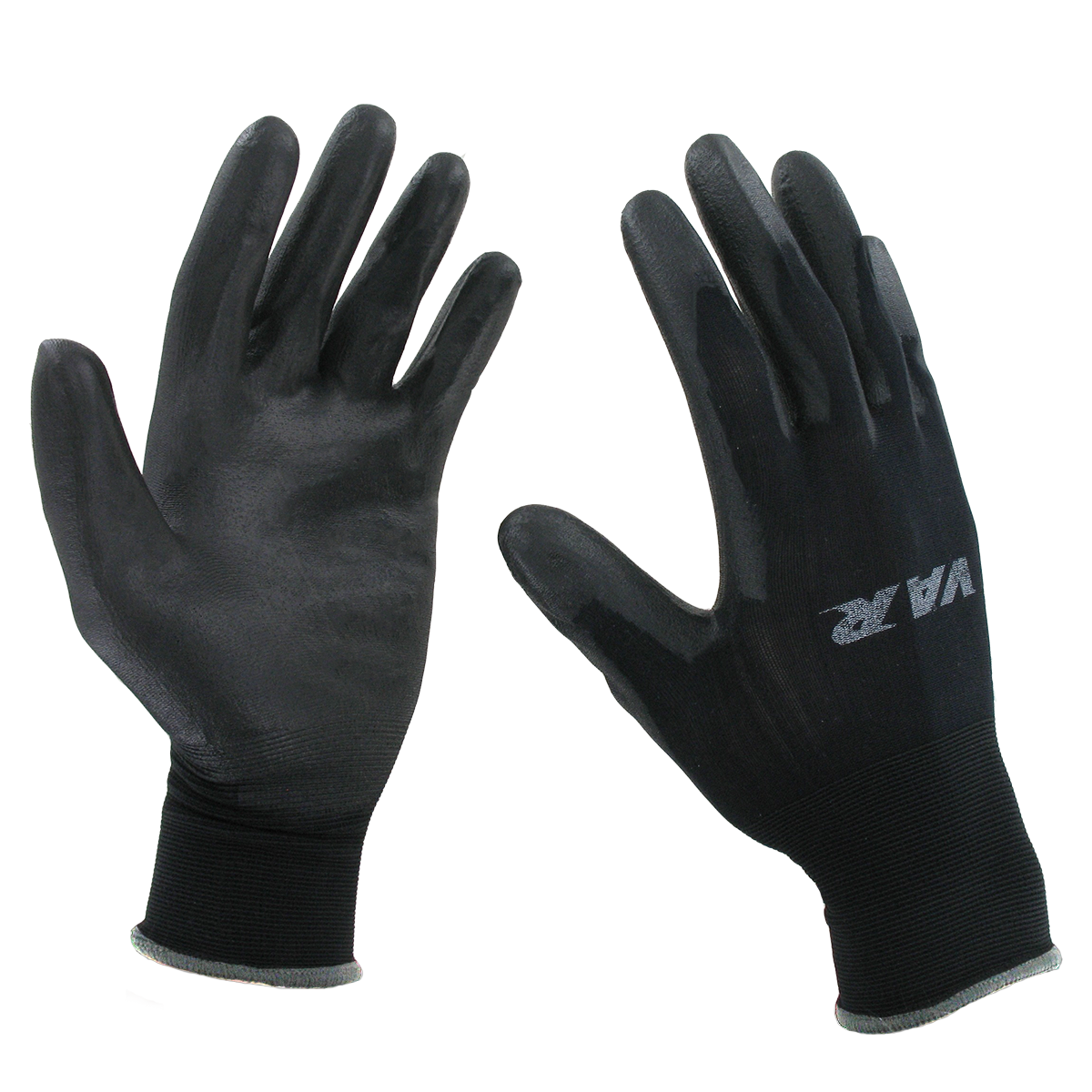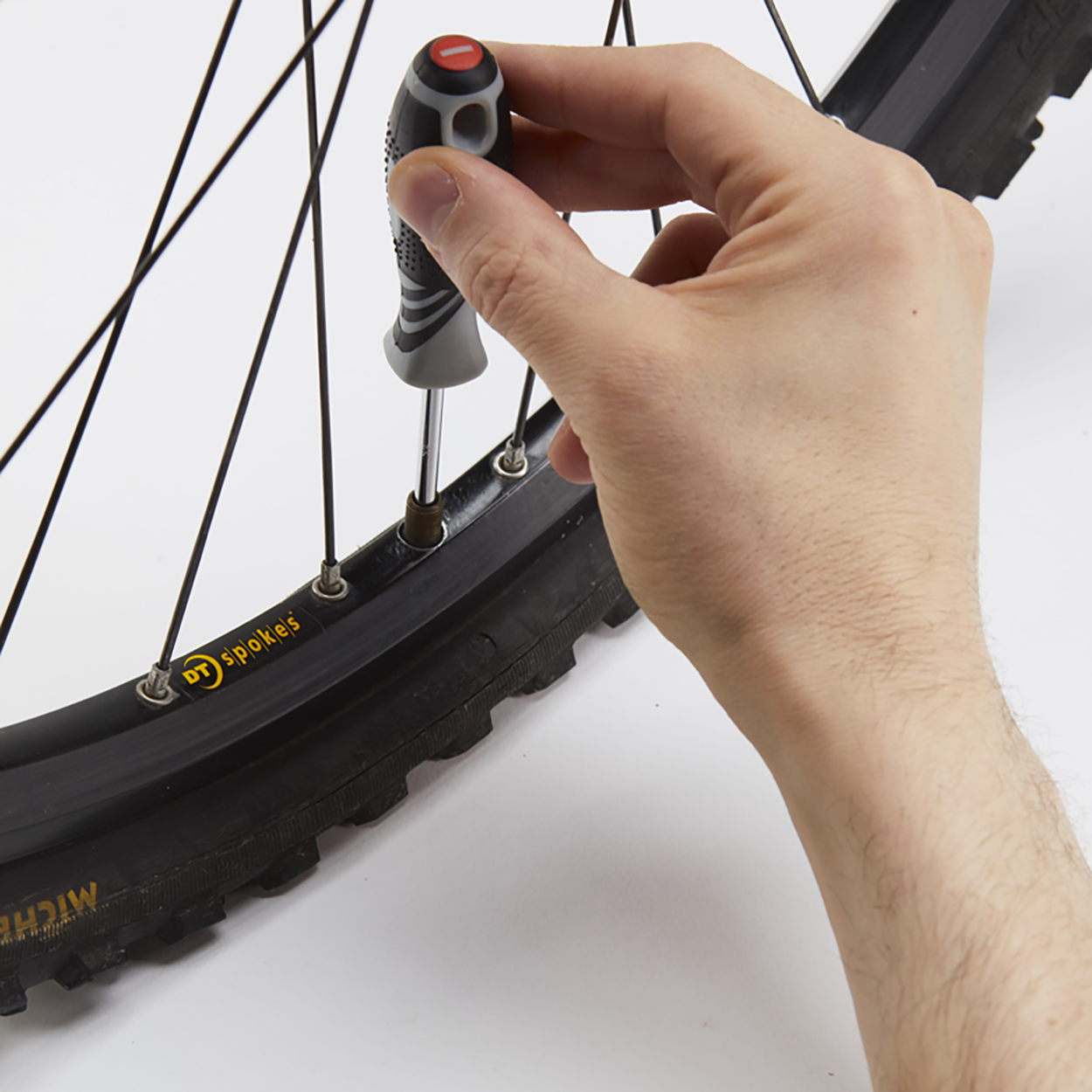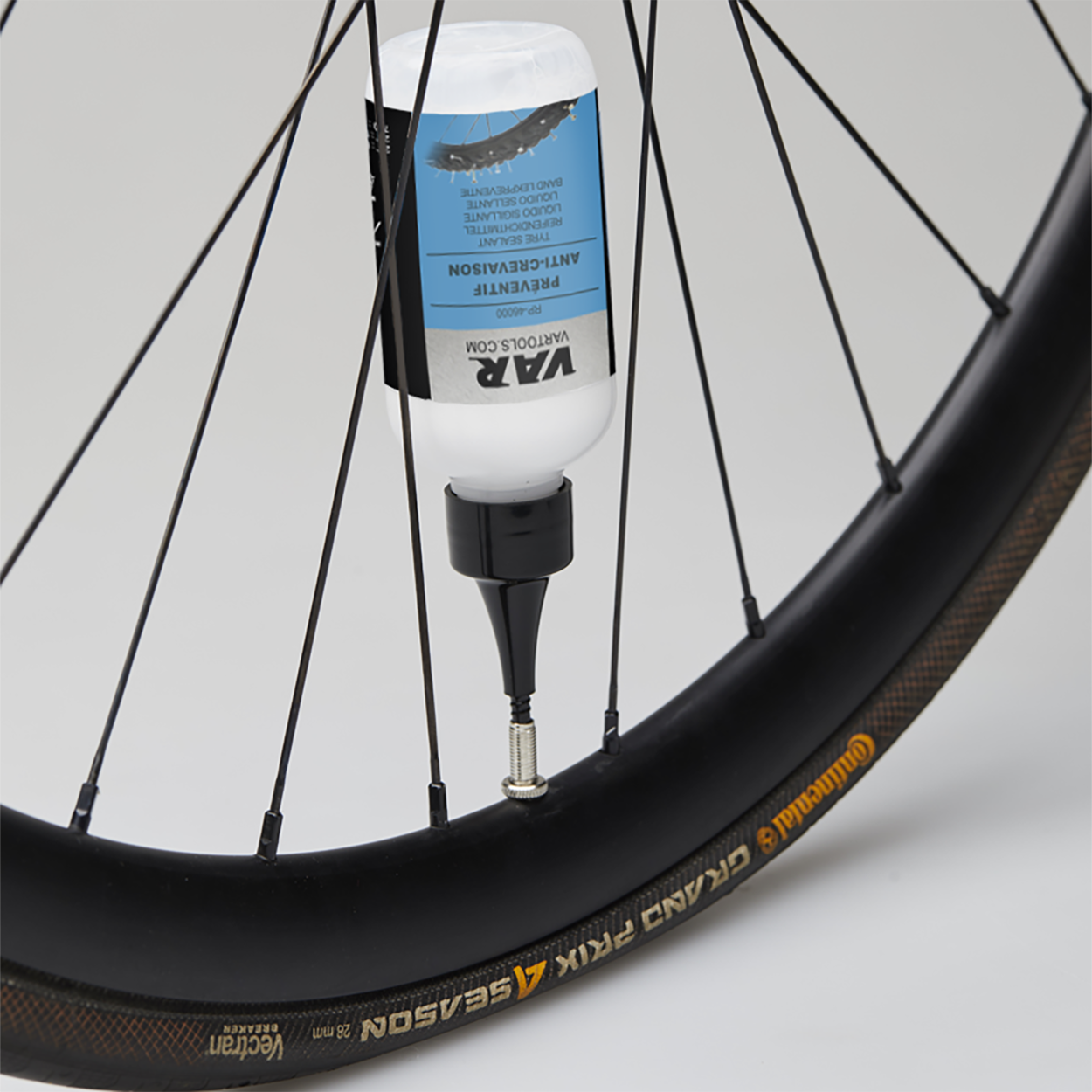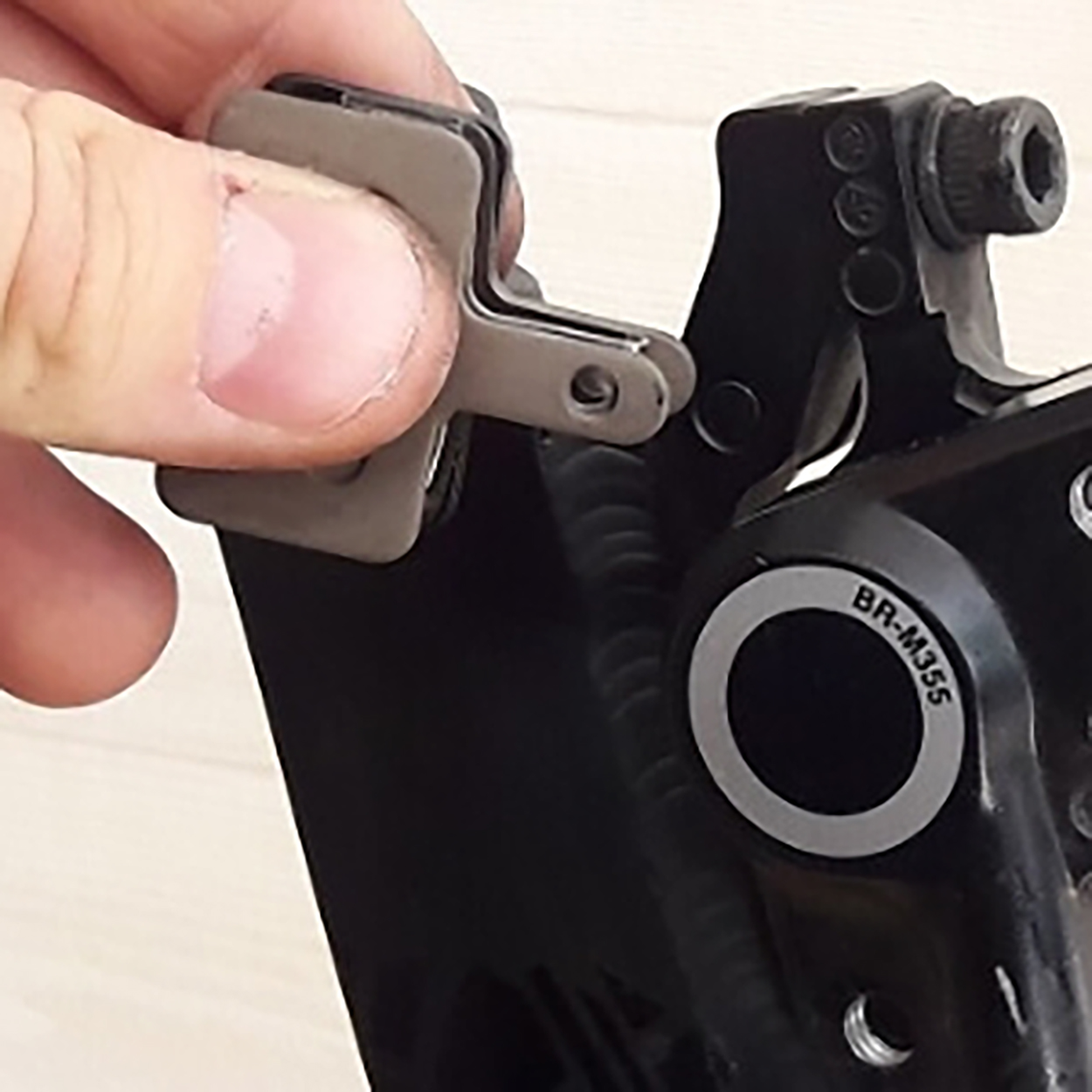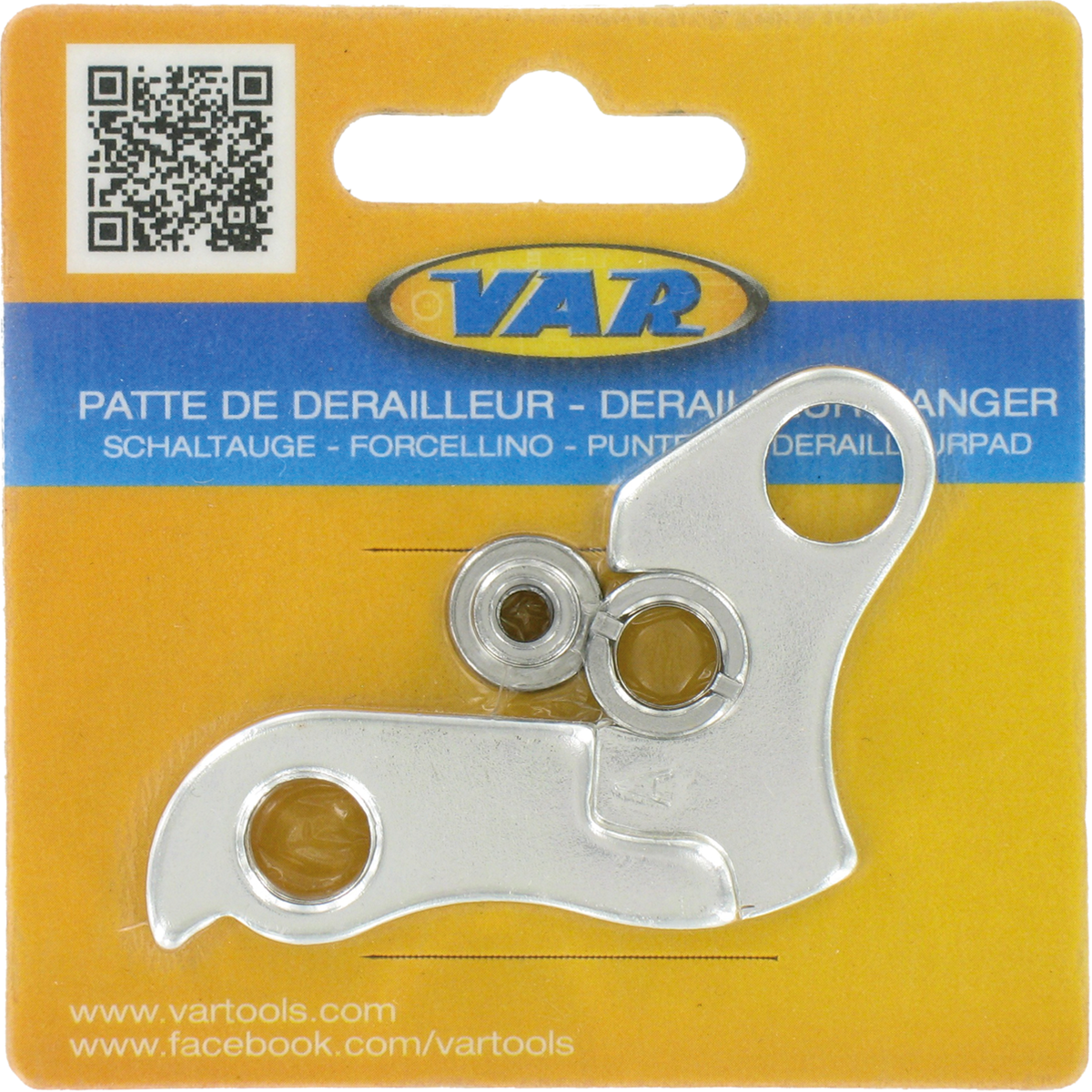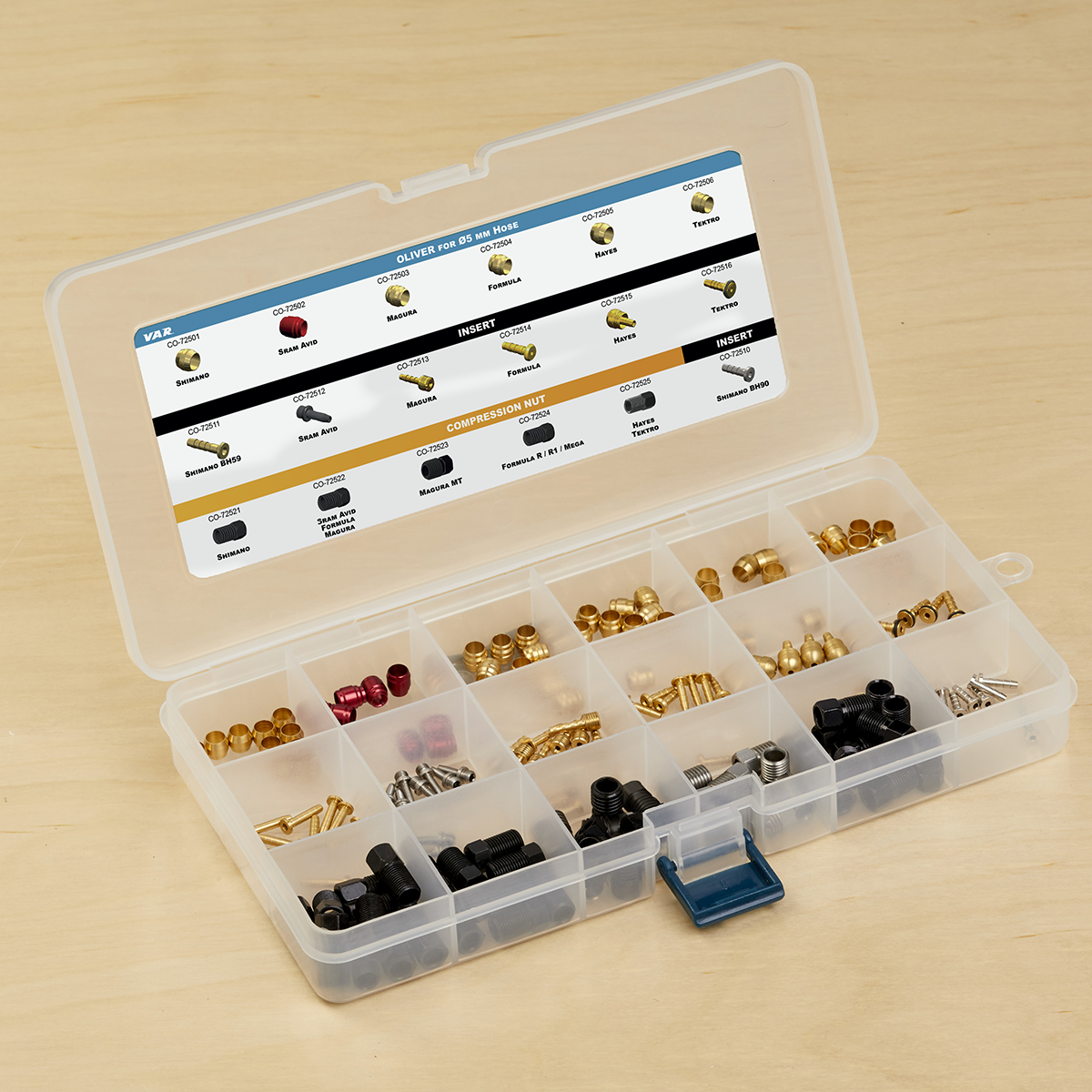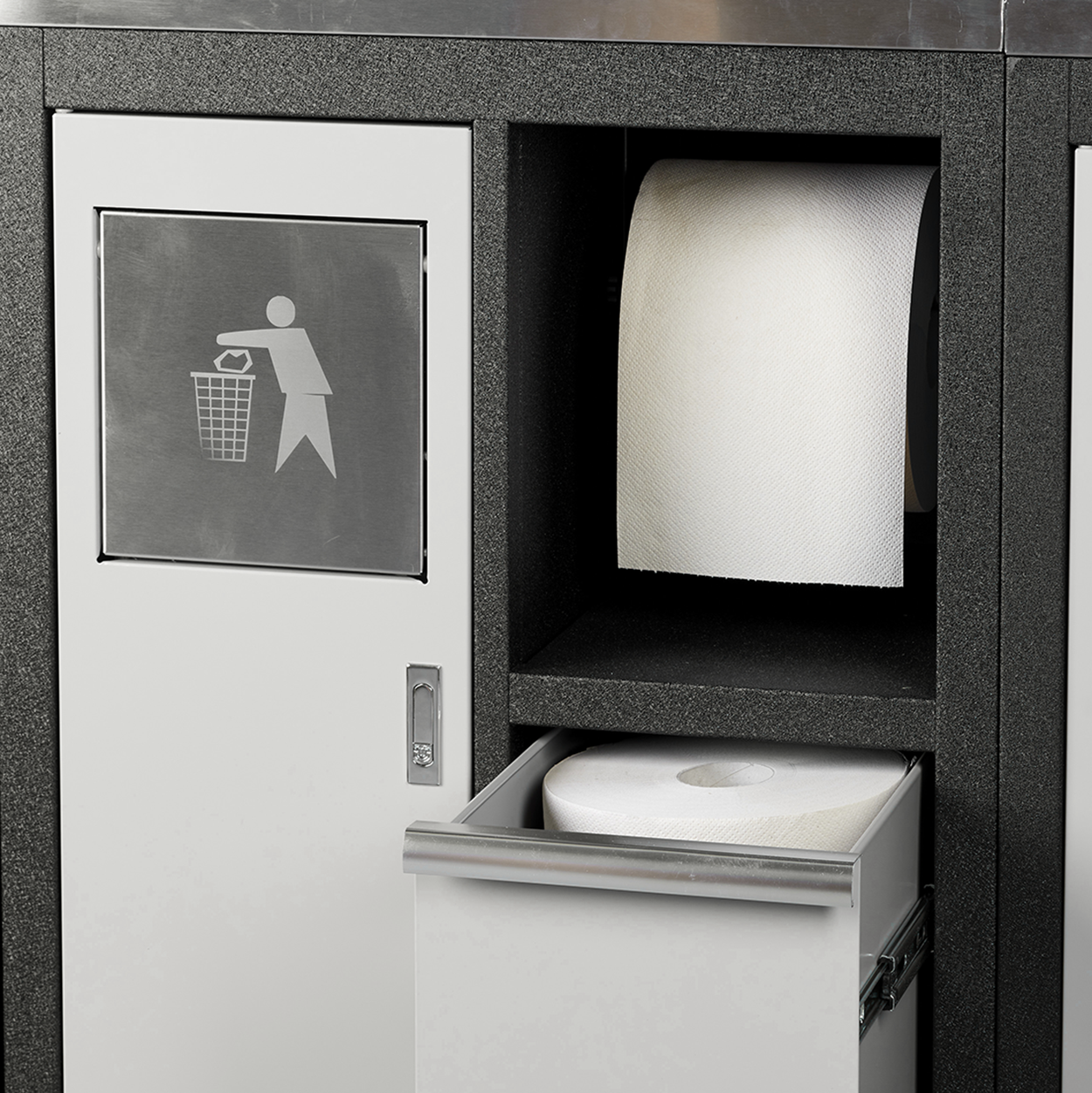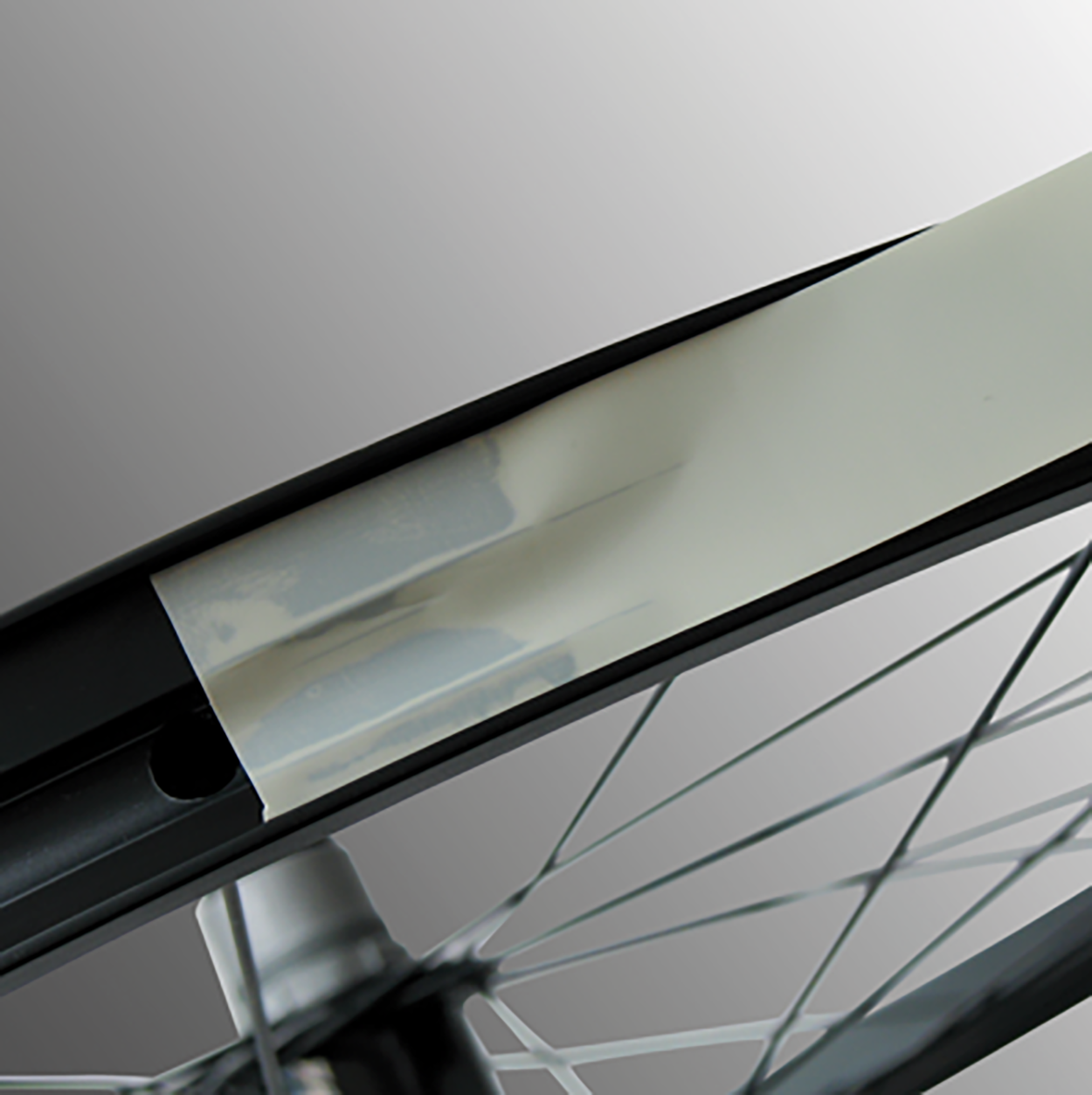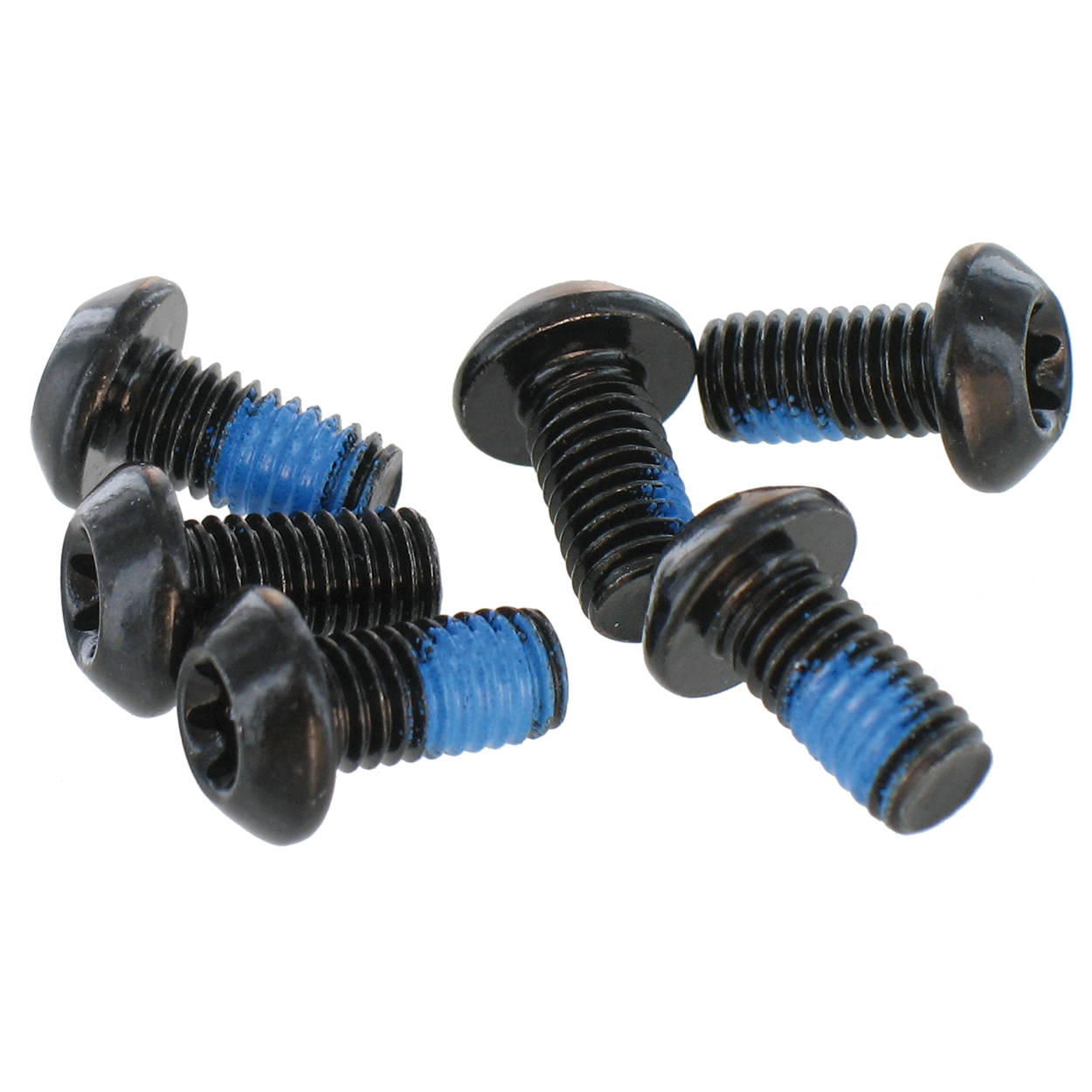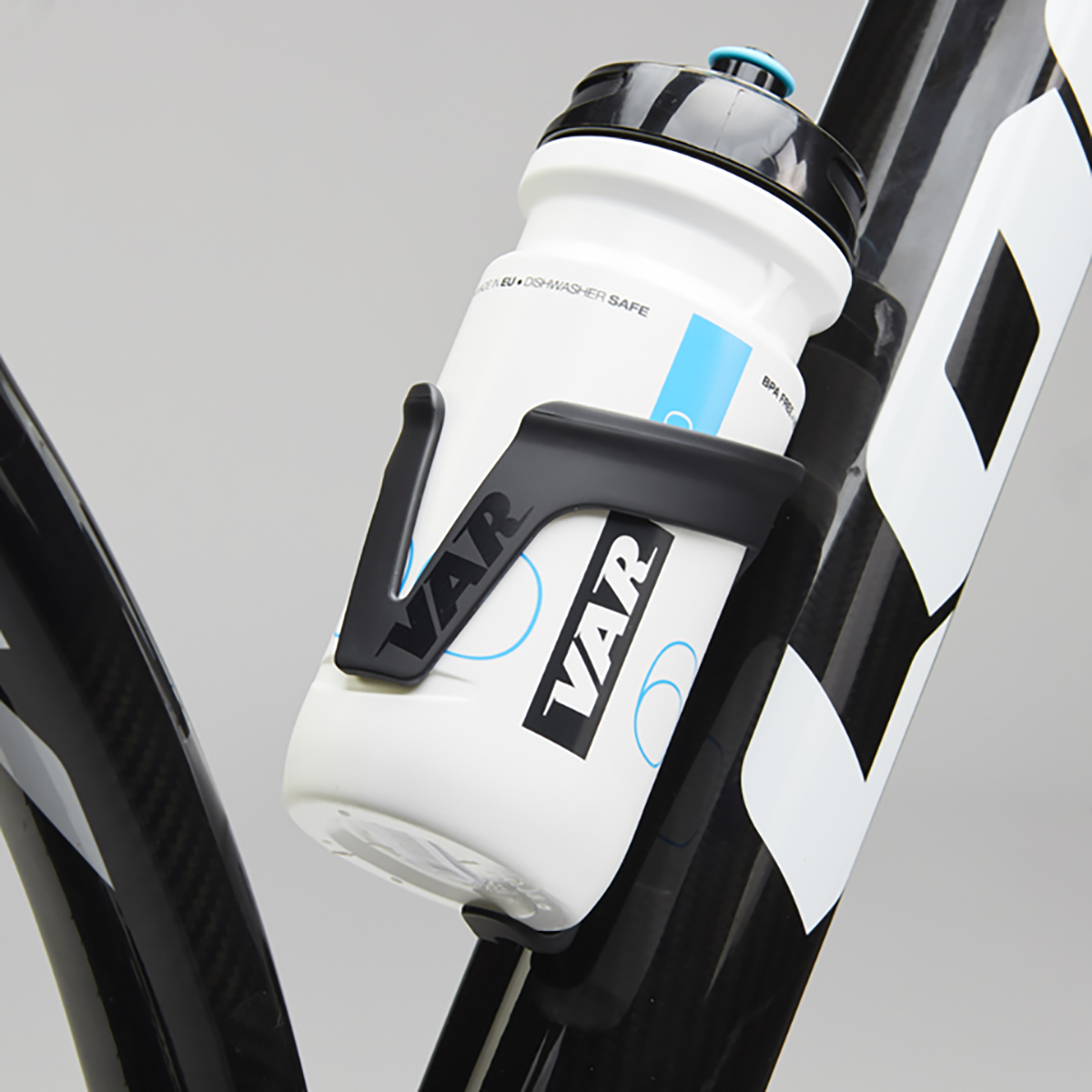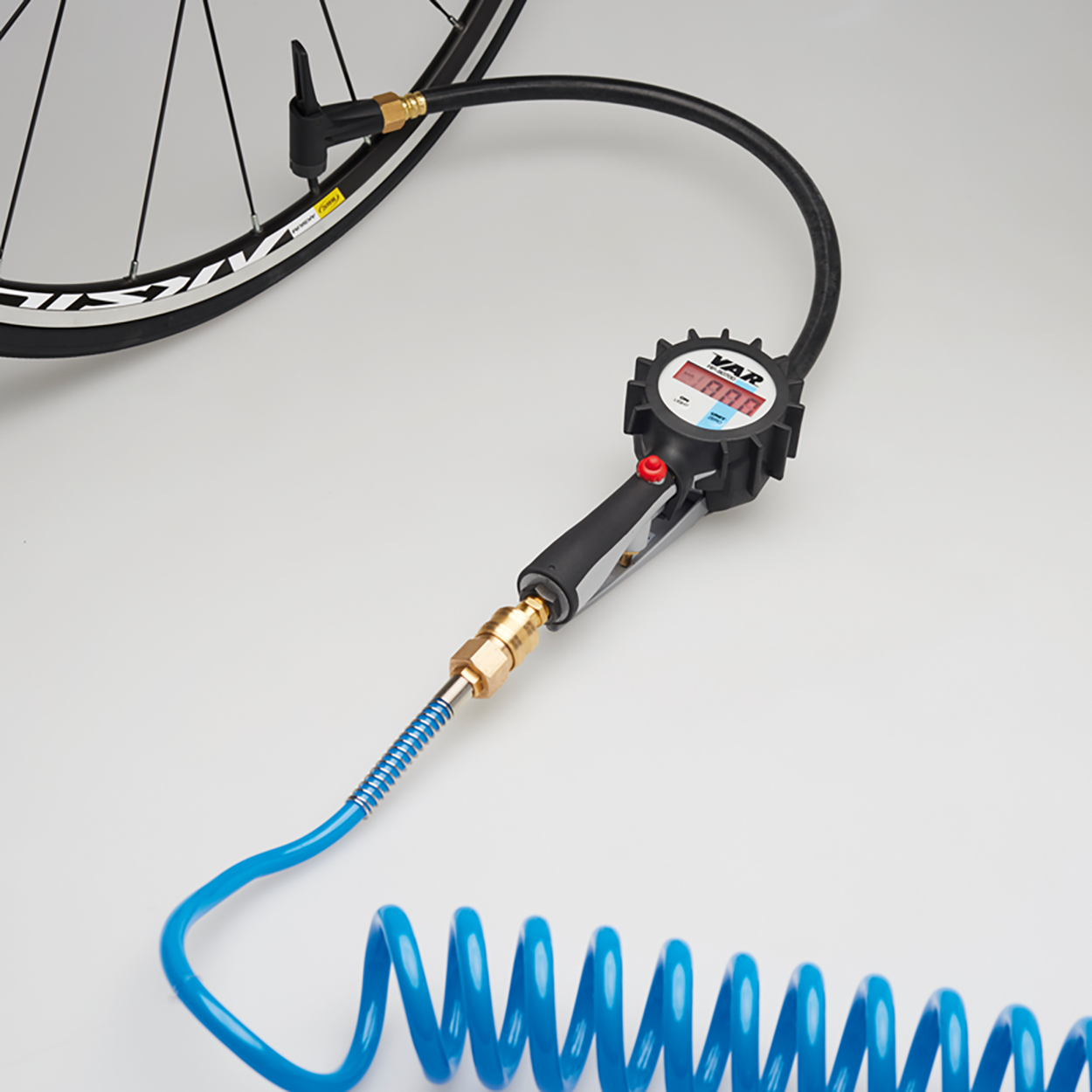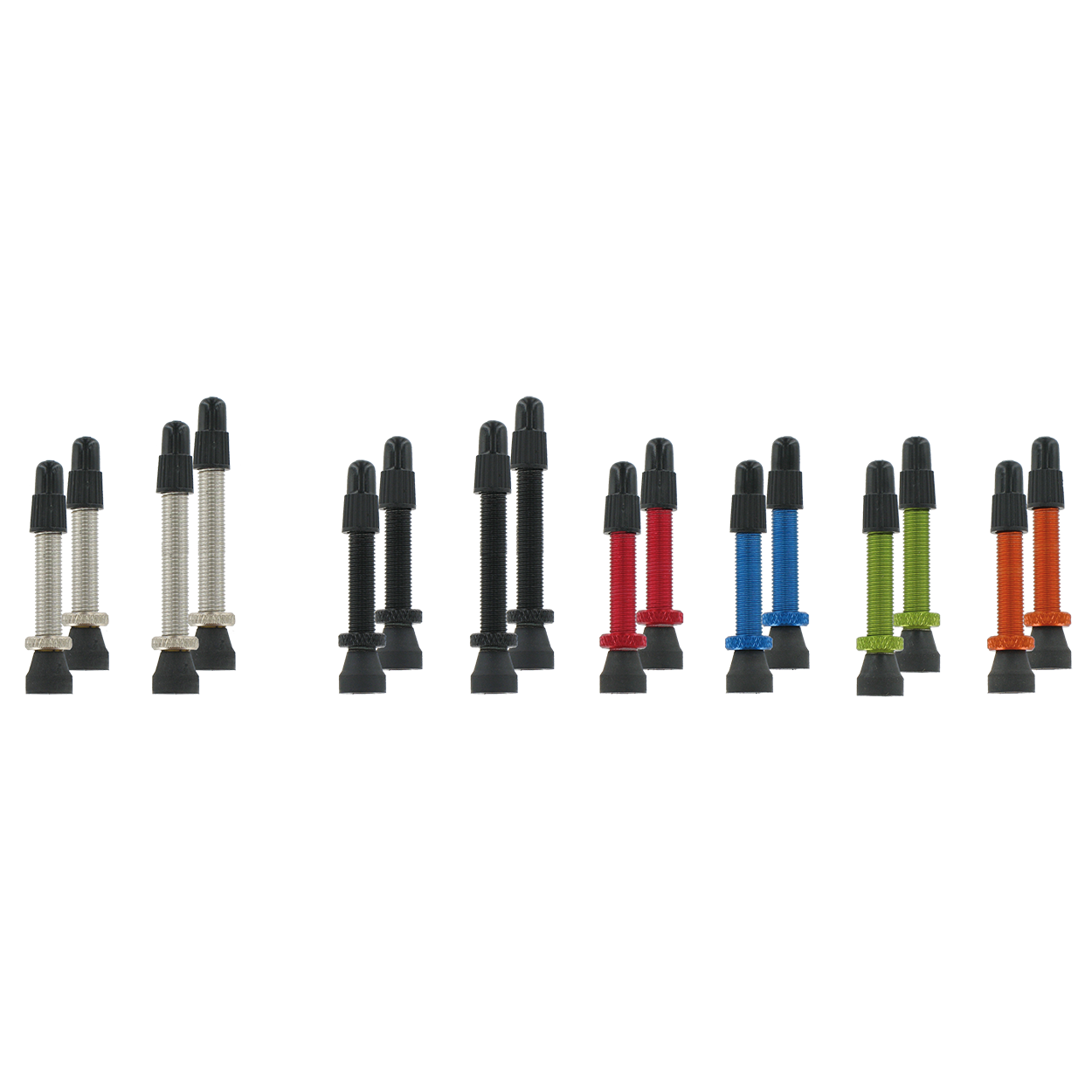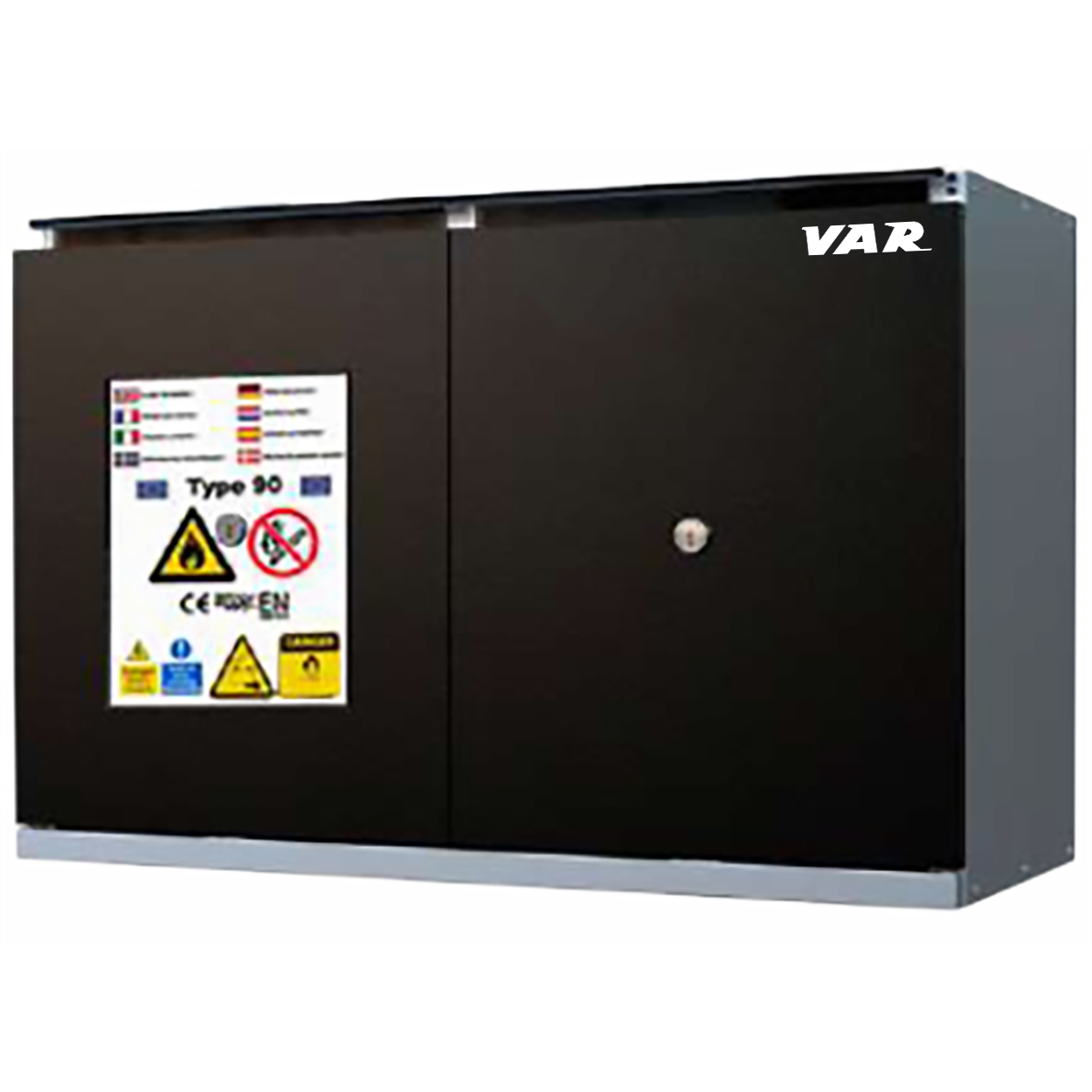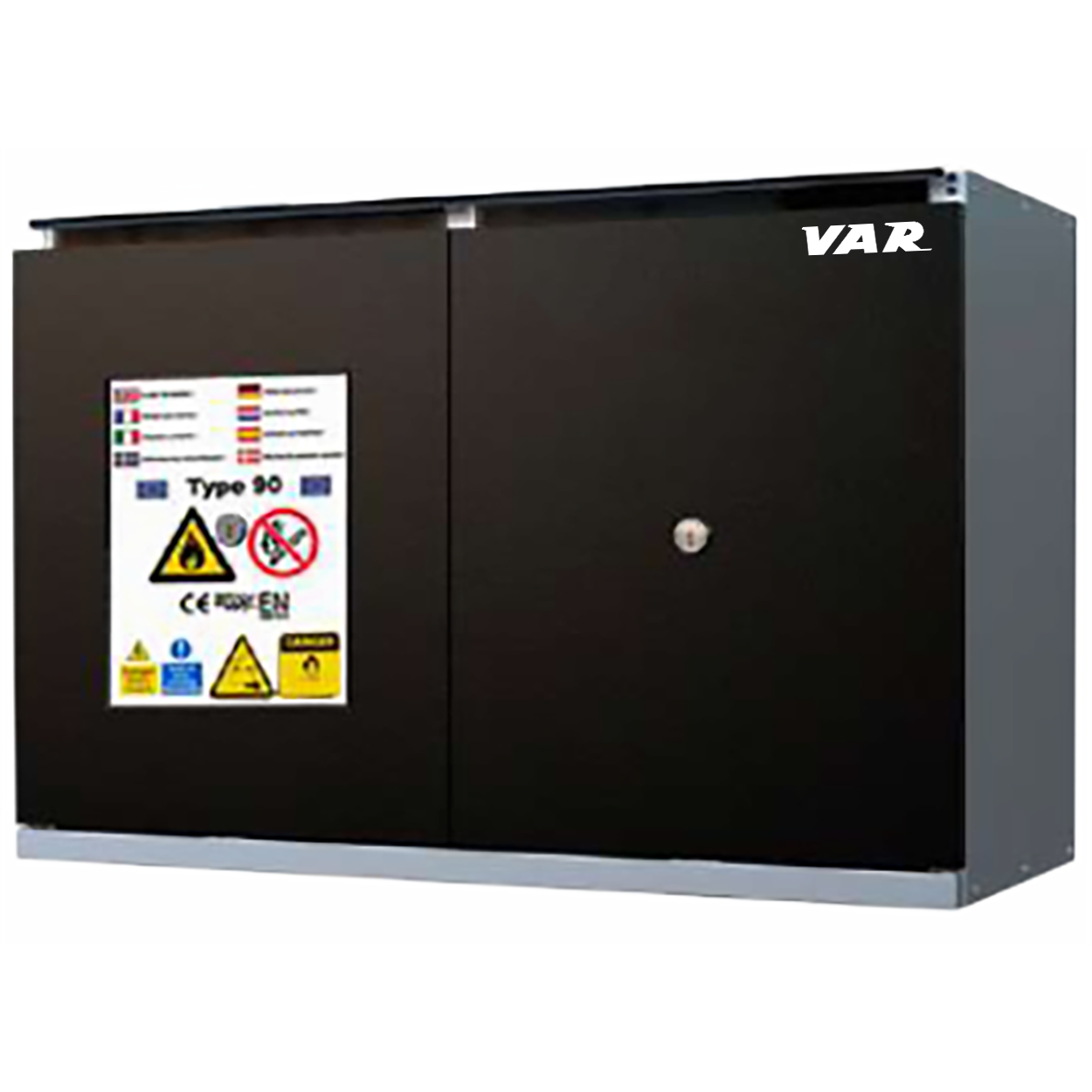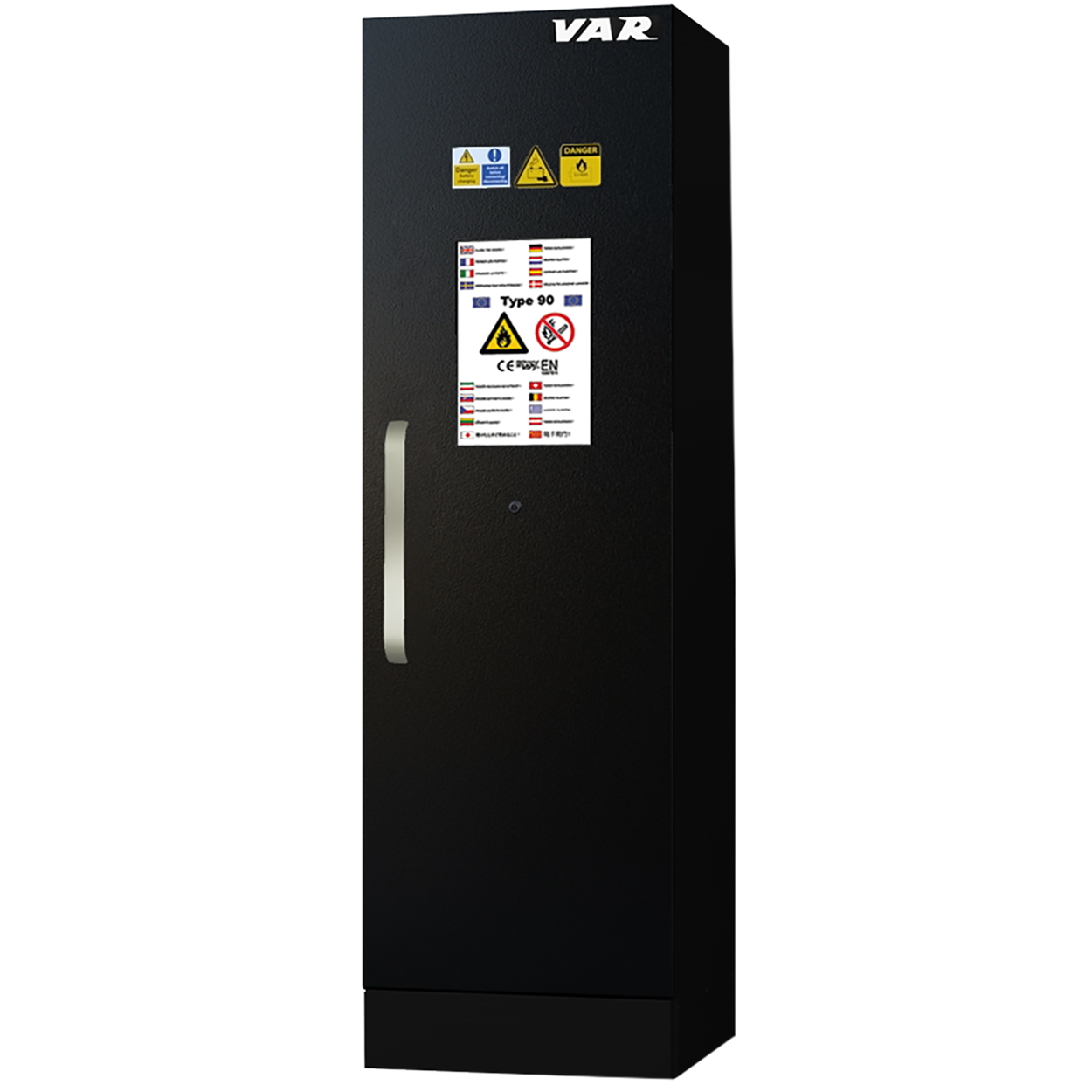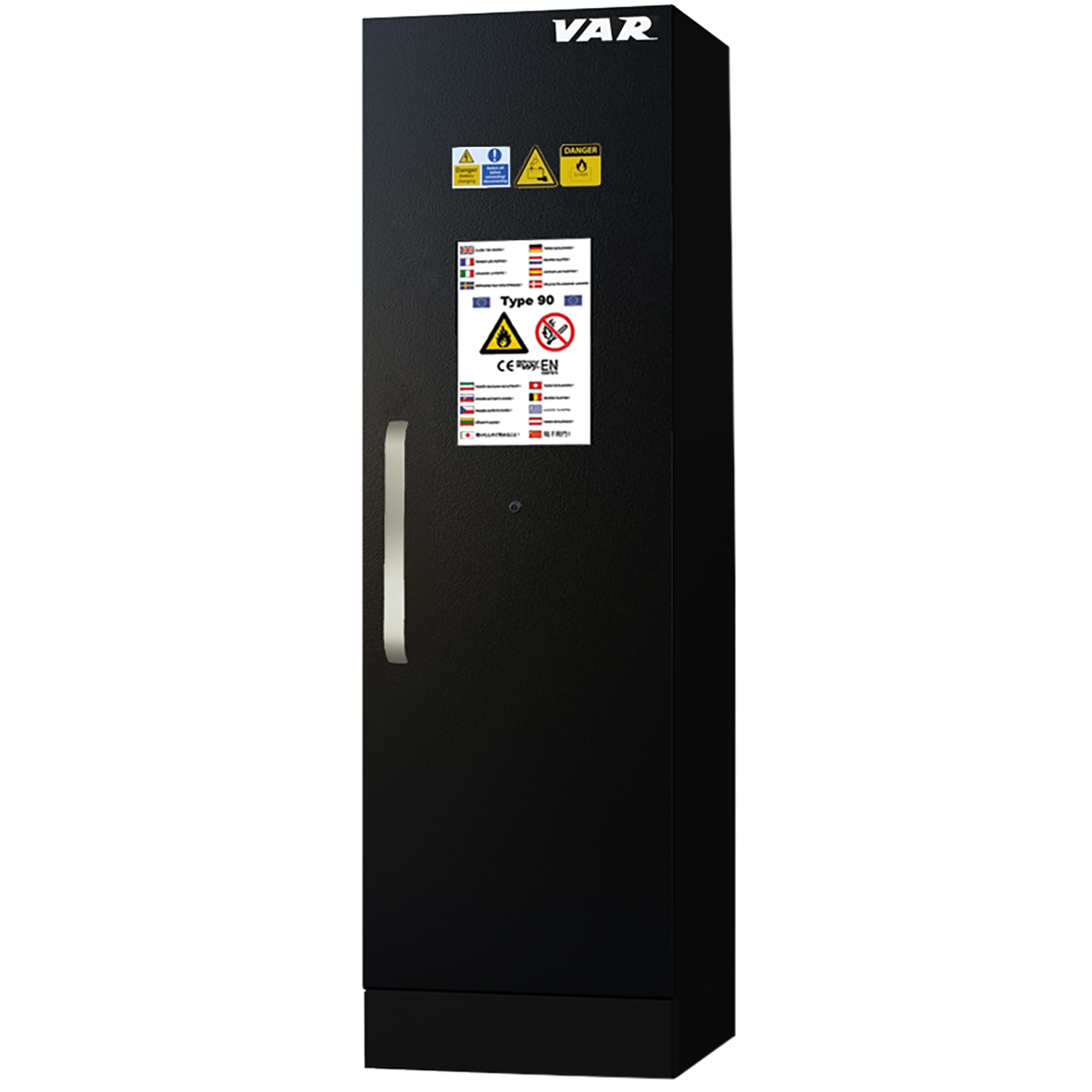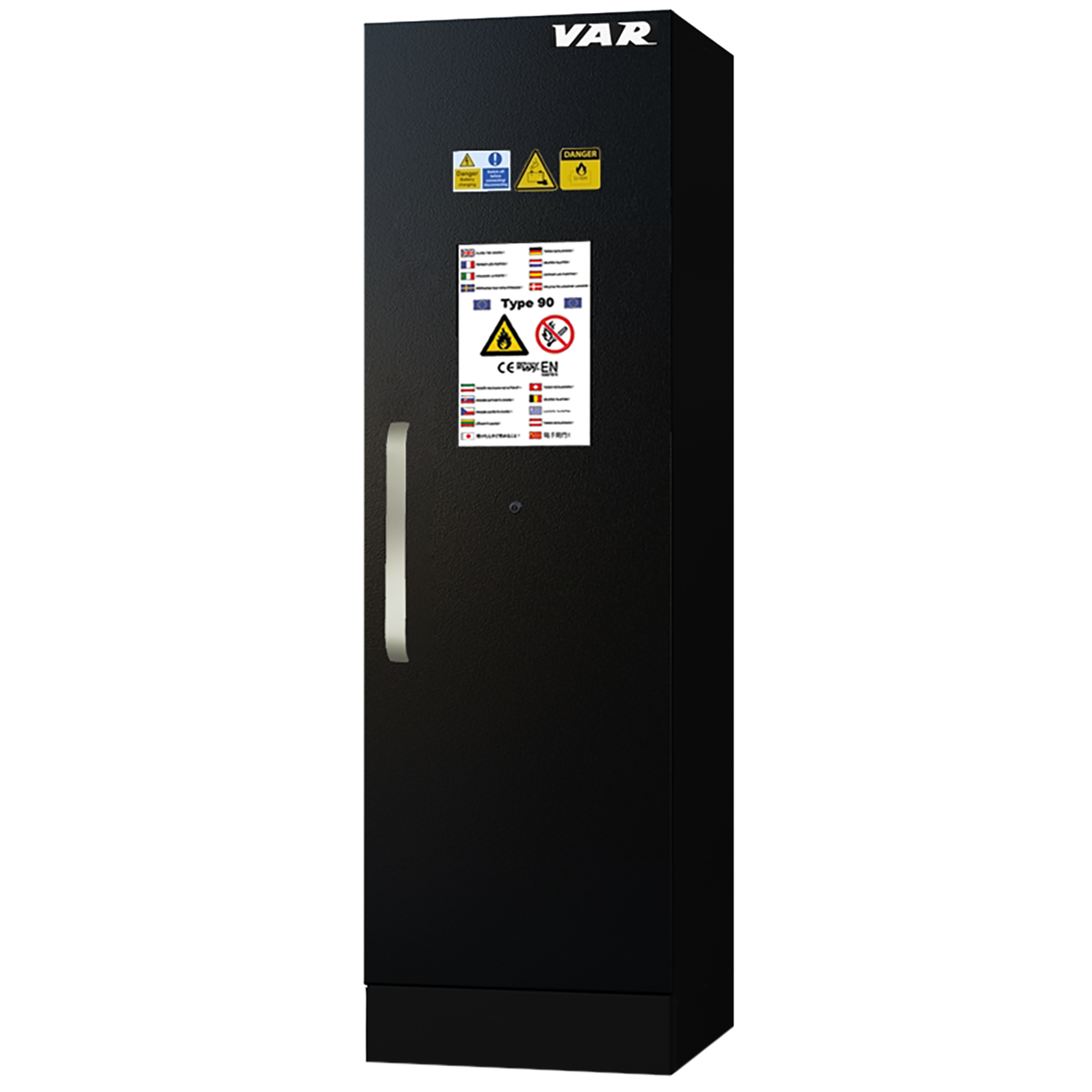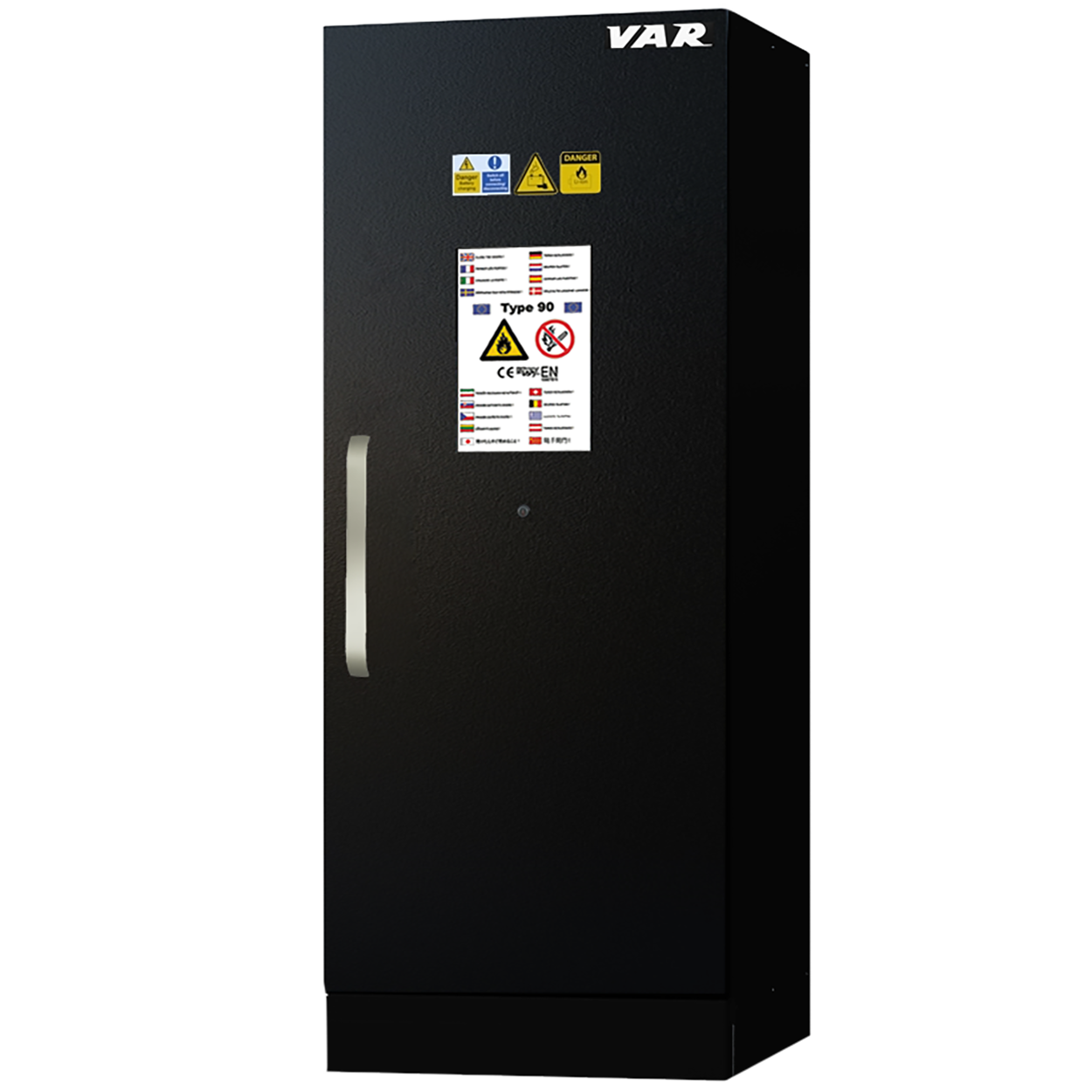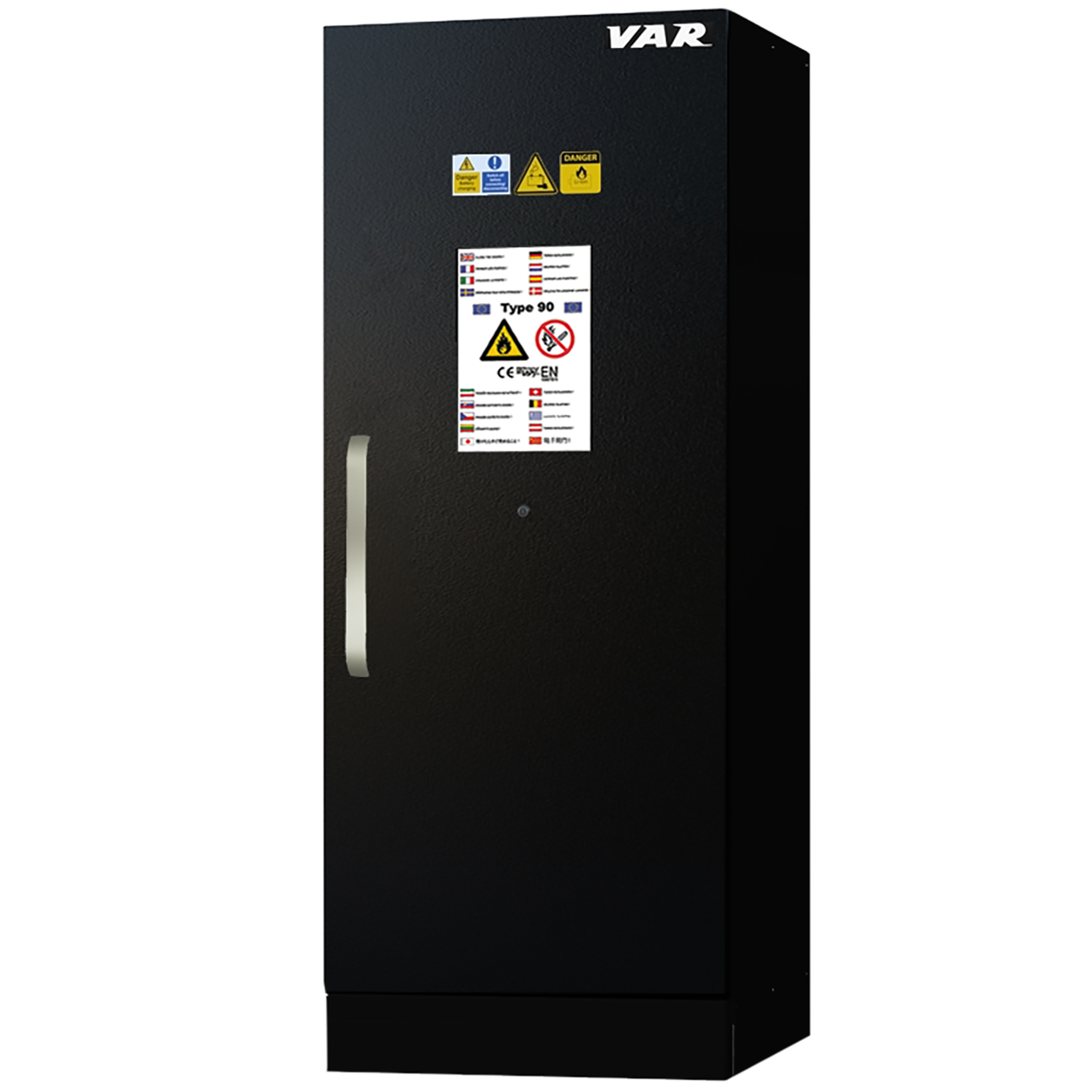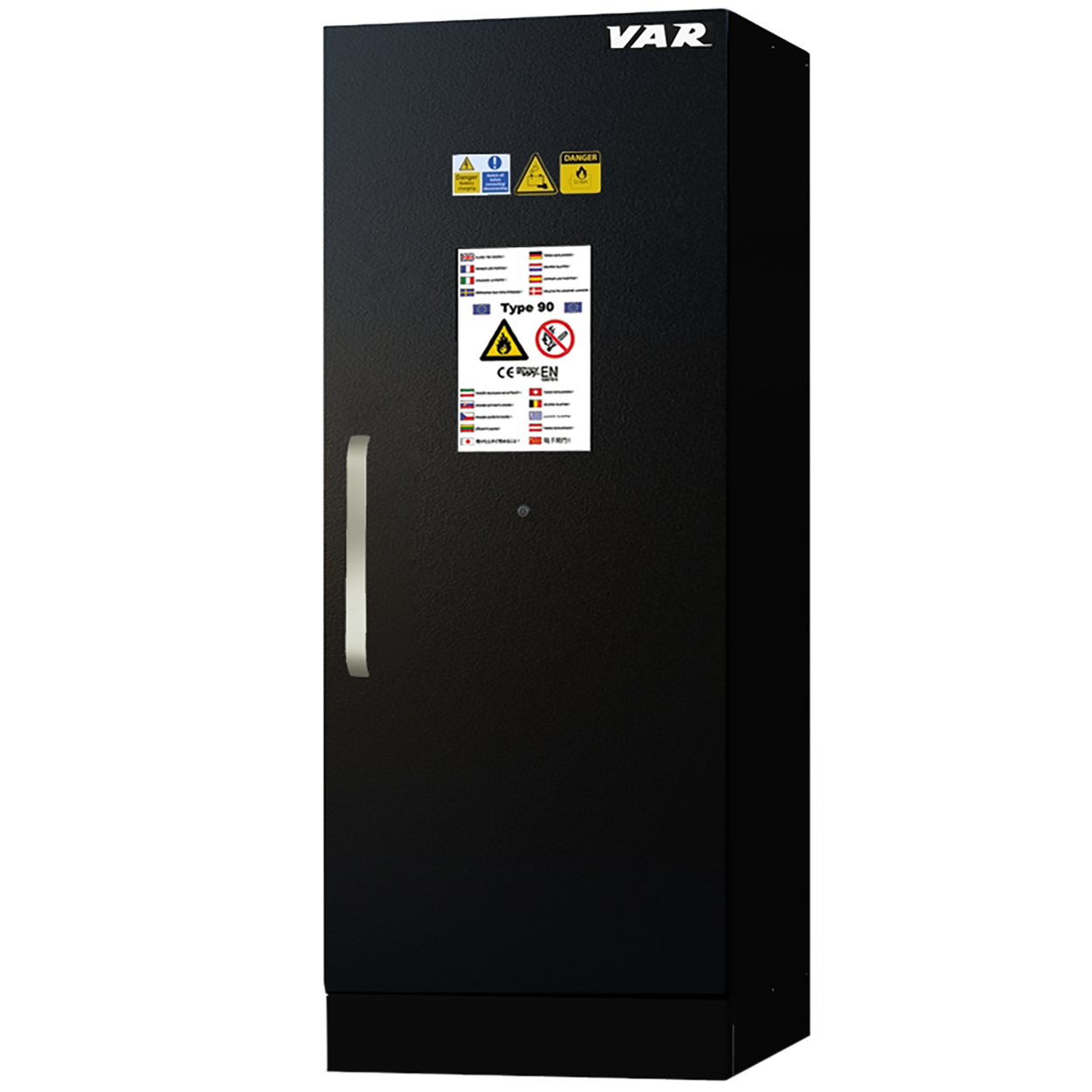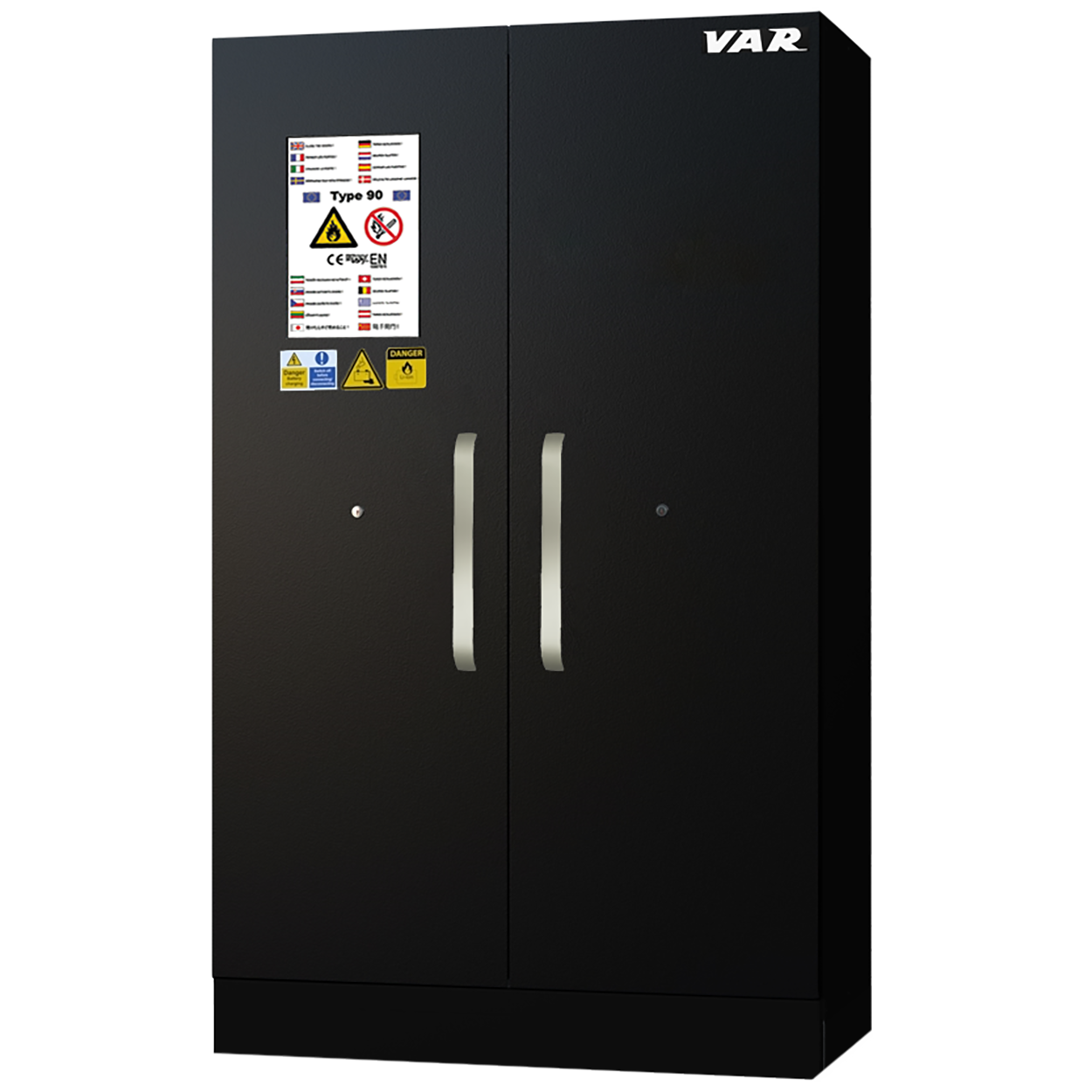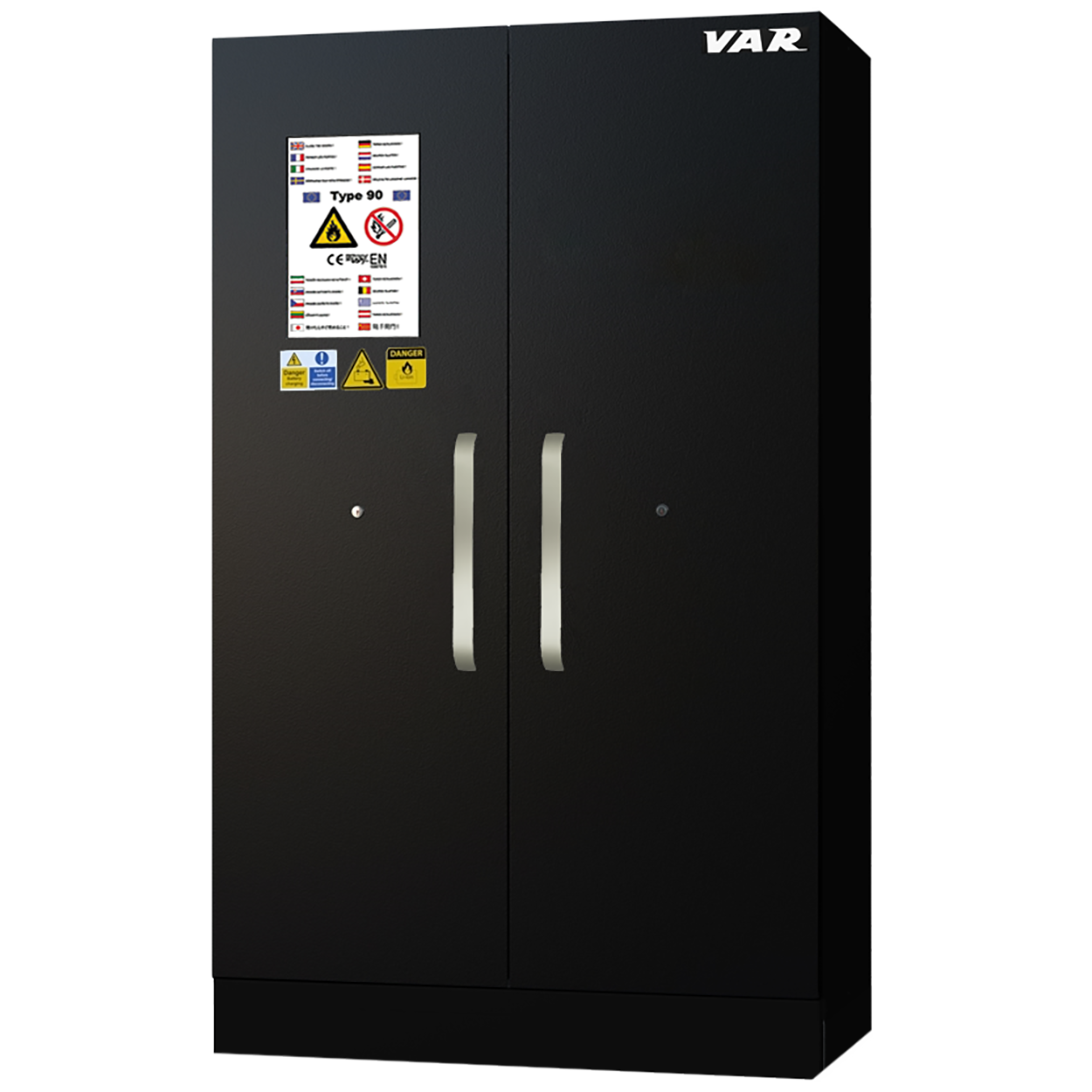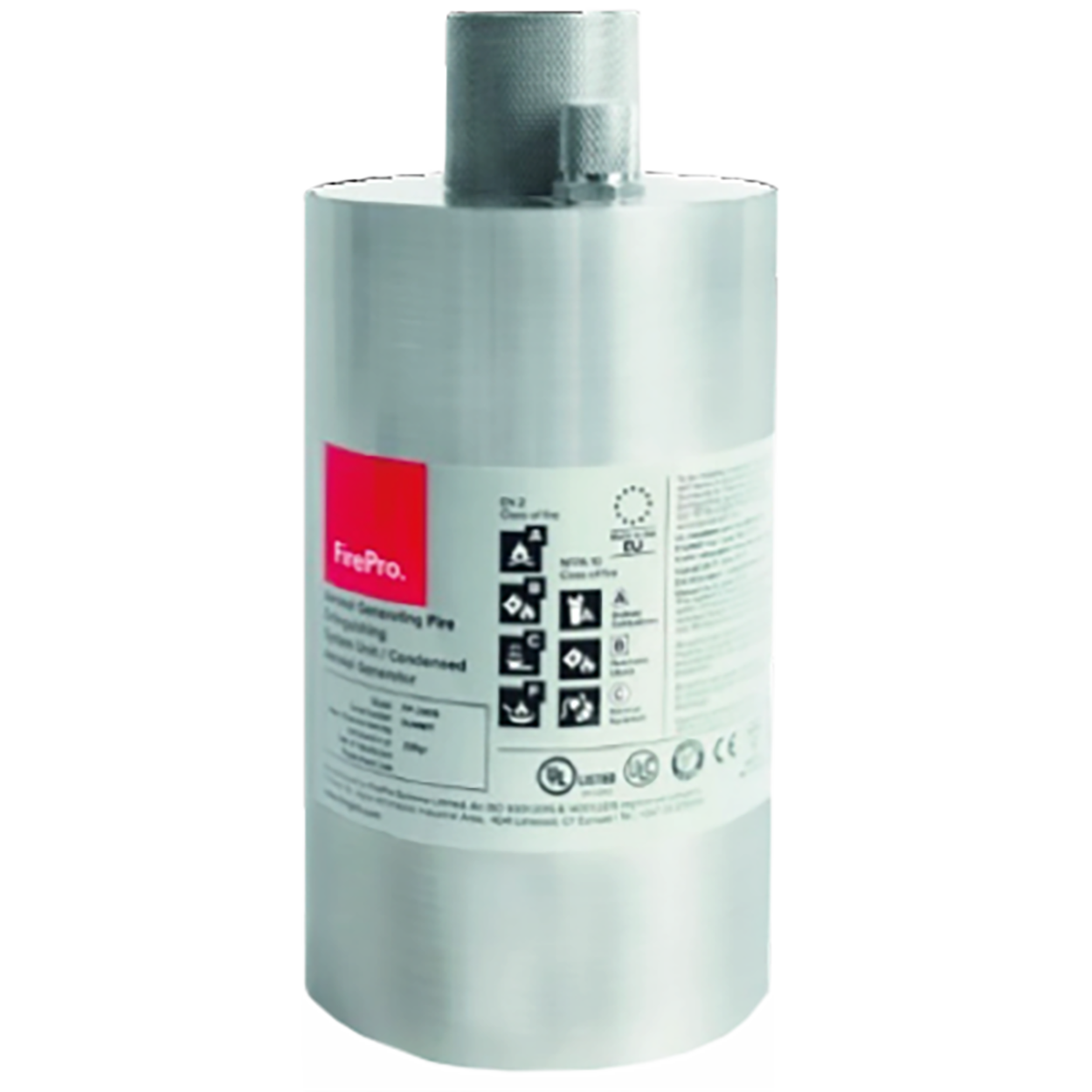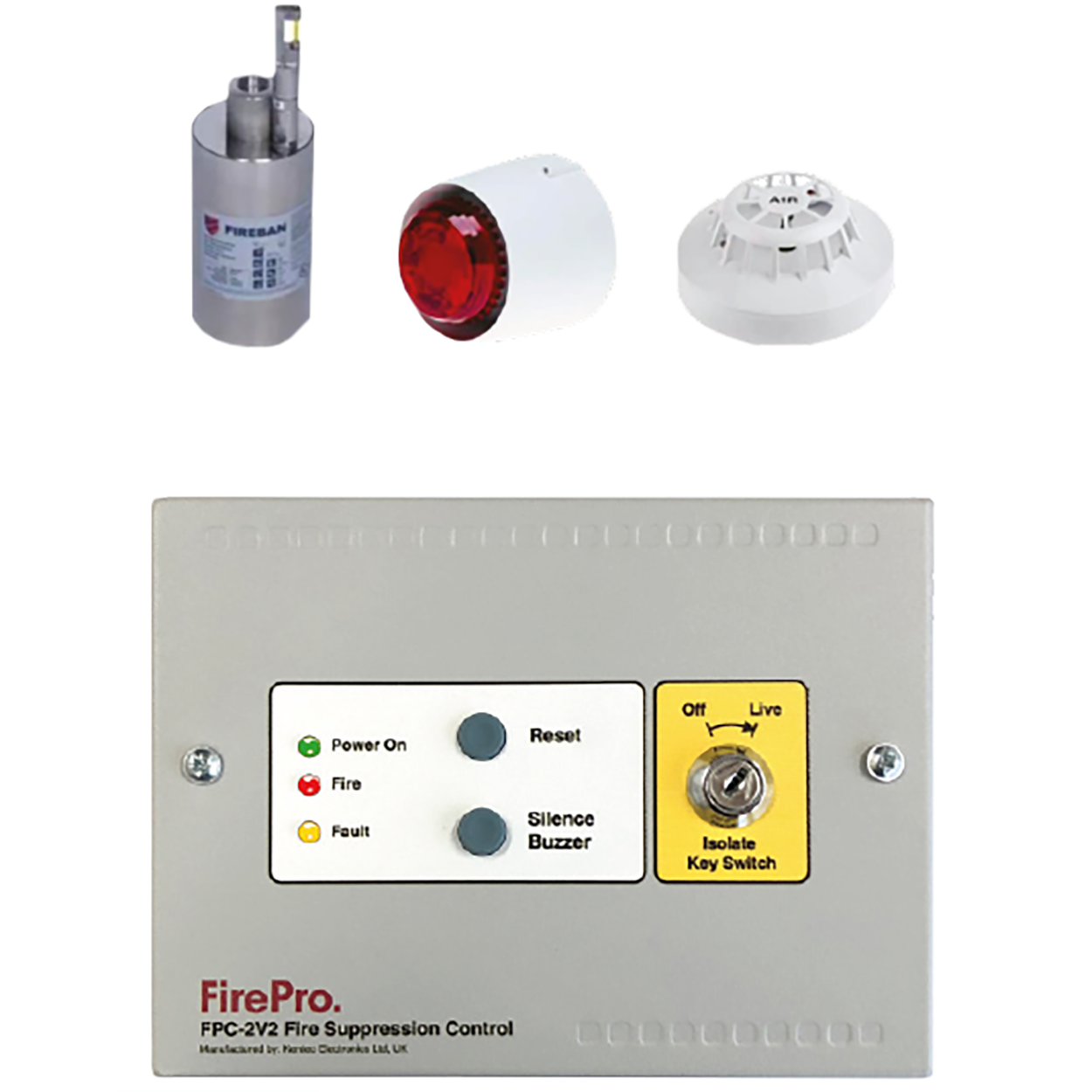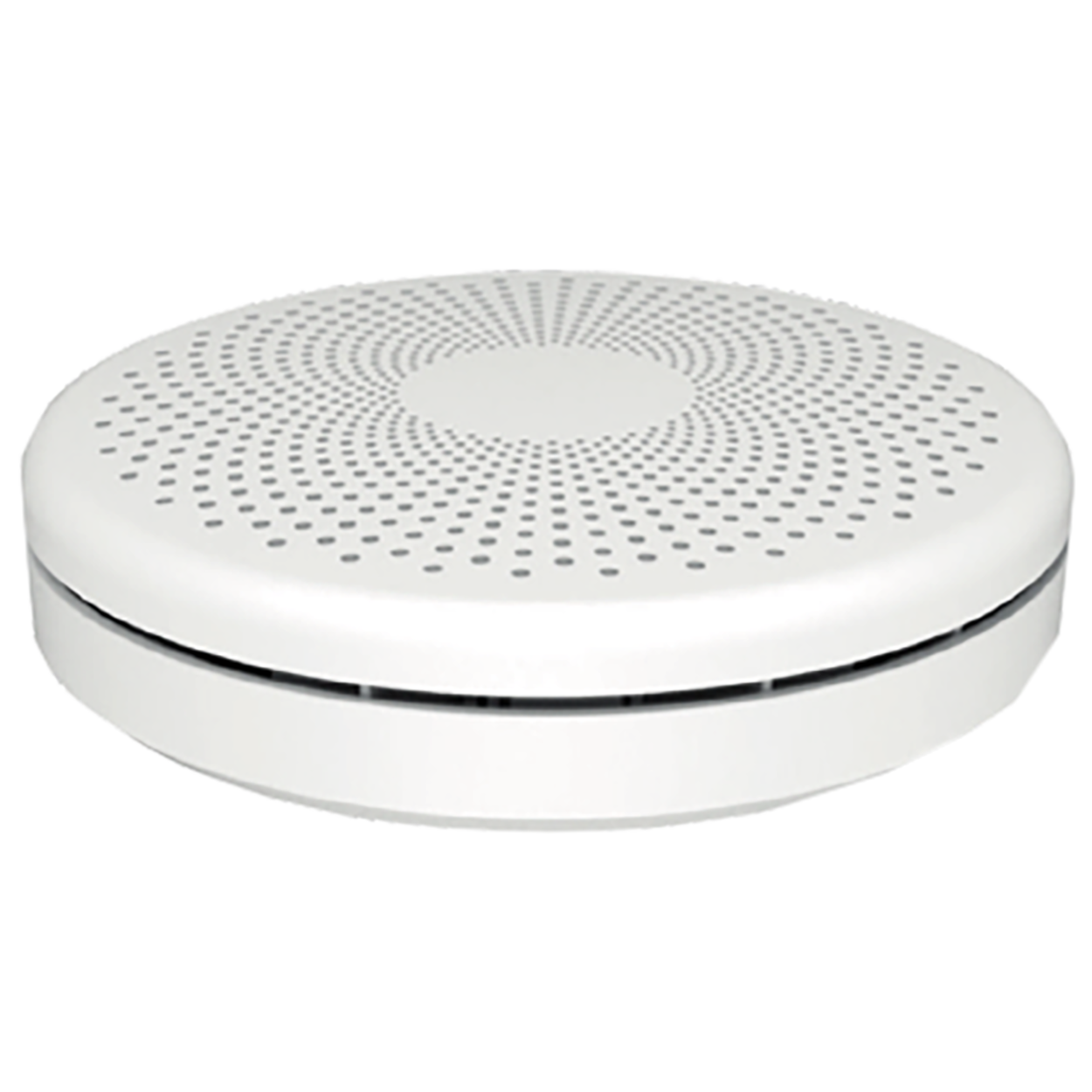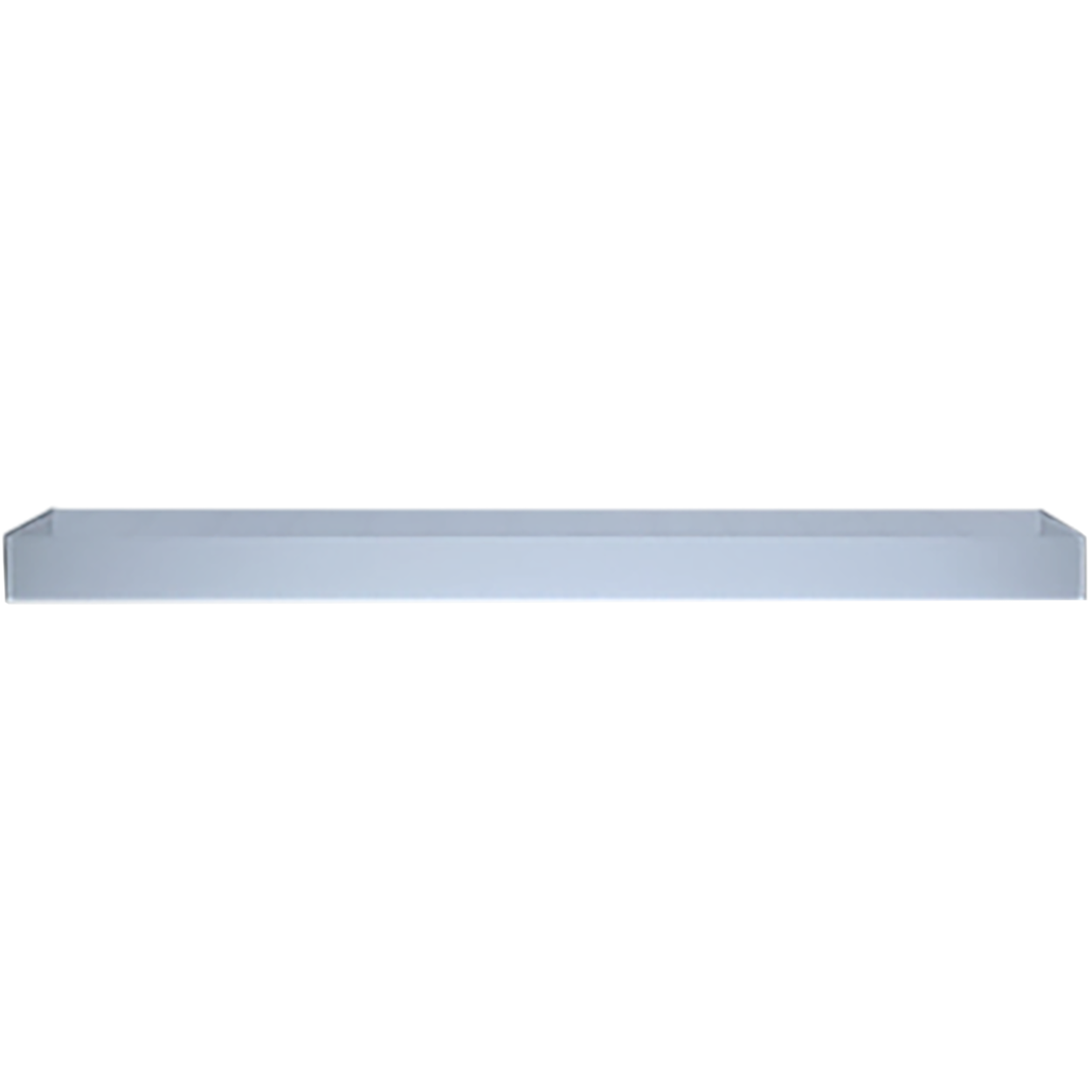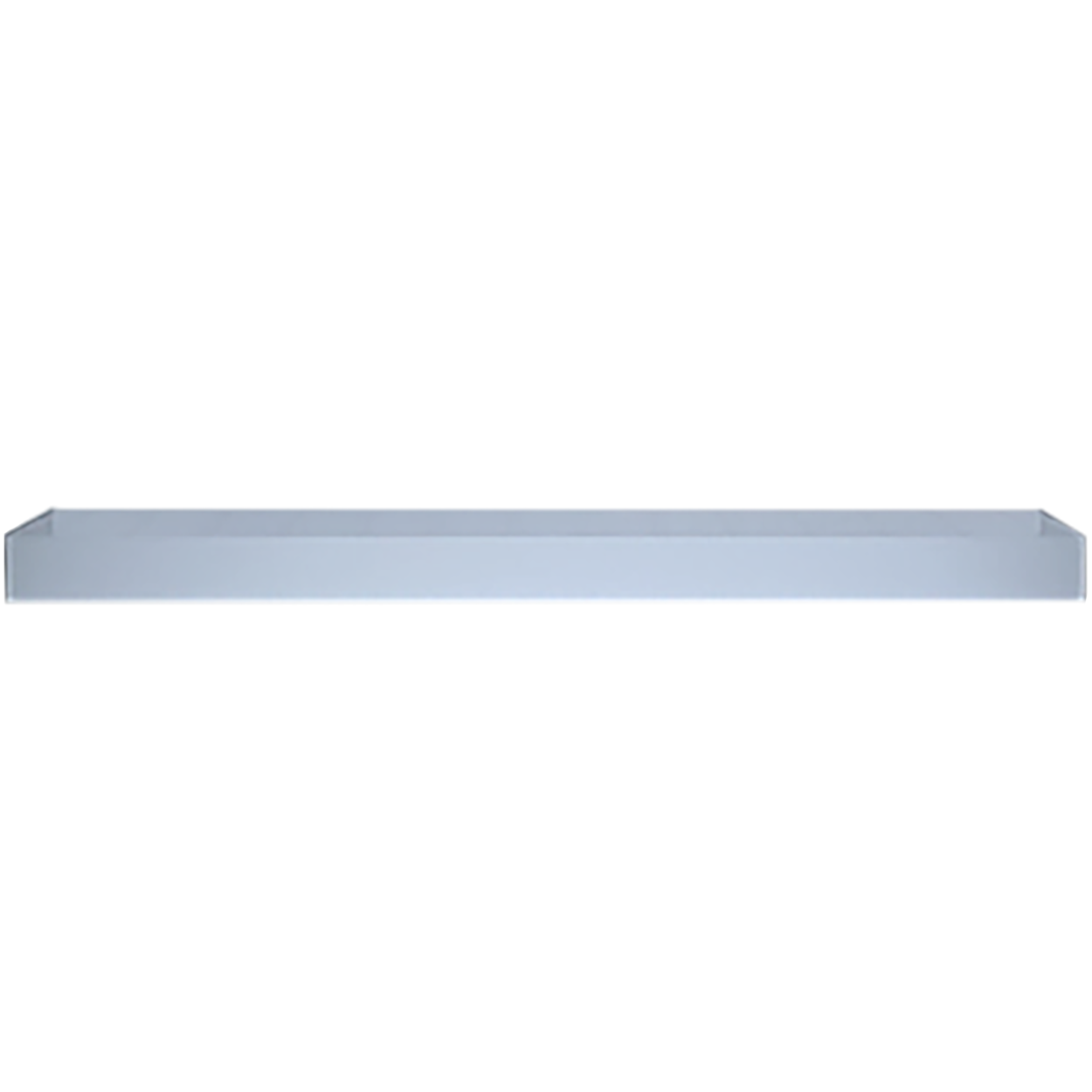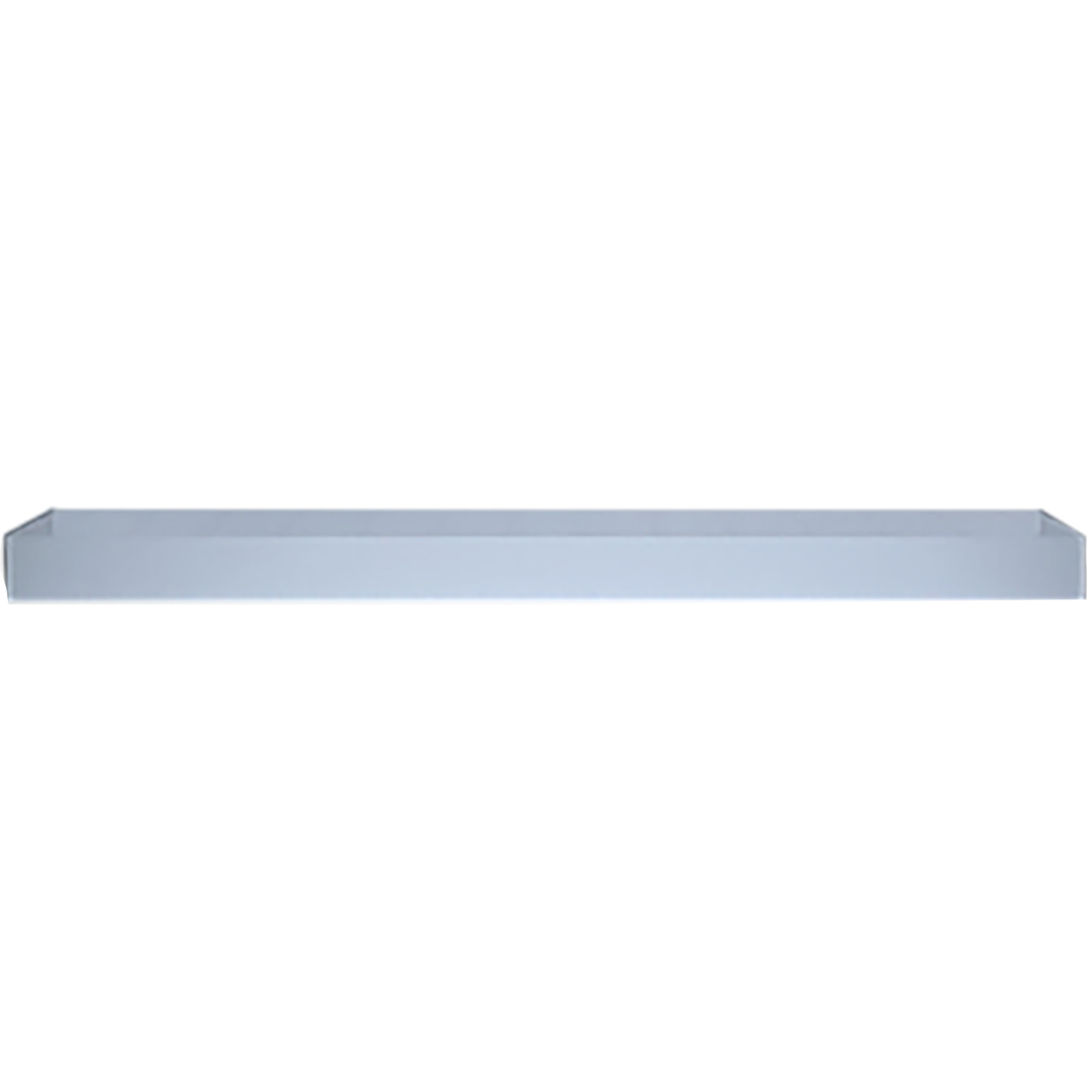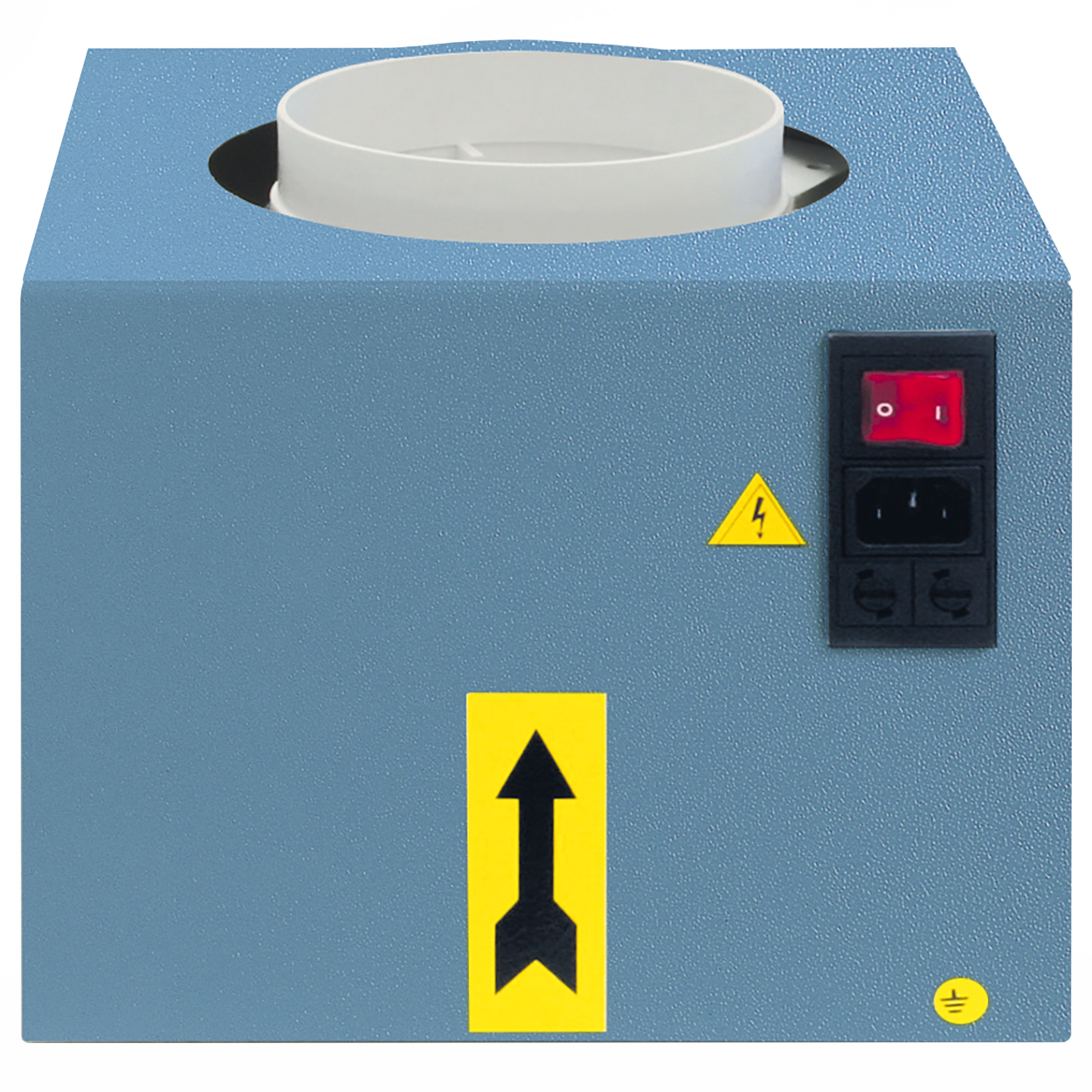BATTERY STORAGE CABINETSPRESENTATION INFORMATIONS CABINETS EQUIPEMENT DELIVERY The rise of the electric bicycle requires storing lithium-ion batteries in your workshop. These can be new, recharging or even used batteries. These products can cause fires, which is why VAR offers you cabinets to store them safely. Their high quality safety cabinets are fire resistant for 90 minutes, in accordance with the European standard EN 14470-1 for 90 minutes.
ComplianceOur cabinets are certified to EN14470-1:2023, EN16121 standards and also tested to EN1363-1.
All our battery storage cabinets have a 90-minute fire rating. General characteristics15/10 steel construction.
Double thermal insulation (A2-S1-D0 EN13501-1 rock wool and calcium sulfate panels). Black epoxy paint. High-strength melamine interior panels. Palletized base with magnetic finishing plinth (for tall cabinets). Door opening direction can be customized upon order for single-door tall cabinets. Doors equipped with door closers, thermofuse, and anti-spark hinges. 1-year warranty. As cabinets are made to order, a lead time of 8 to 10 weeks is required. SafetyThermal fuses automatically close the doors when the temperature reaches 50°C. Thermo-expanding gaskets ensure the cabinet's tightness should the interior temperature rise. The air circulation vents are equipped with fire dampers that cut off air circulation when the interior temperature exceeds 70°C. The cabinets are equipped with a grounding location. Lockable. EquipmentThe battery storage cabinets are pre-equipped to meet the needs of cycling professionals without compromising safety requirements.
Several levels of equipment are available, with possible options: - Passive storage.
- Storage with charging. - Storage with ventilation. - Storage with charging and ventilation. Depending on the format and pre-equipment level, the cabinets can be equipped with the following options:
- Ventilation box. - Retention tray. - Additional shelf. - Alarm system. What are the dangers of lithium-ion batteries ?Among the 50 potential accident scenarios identified by INERIS (National Institute of Industrial and Risk Environment) throughout the various stages of the batteries life cycle, 12 were considered critical. They notably relate to the storage, charging and use steps. The most problematic consequence of those risks are battery fire (or metal fire). This is a significant risk because the fire caused by lithium-ion batteries cannot be put out in a conventional way, the battery itself generating the oxygen molecules and heat necessary for combustion. It can then only be switched off with the help of special powders, all in a confined environment (at the risk of the powder losing its efficiency). What are the regulations in force ?While insurance companies are beginning to recommend the use of safety cabinets for lithium batteries, the French Labor Code is becoming more explicit.
Article R4412-18 of the French Labor Code states: [...] the employer shall take, in order of priority, the necessary measures to:
1° Avoid the presence in the workplace of ignition sources likely to cause fires or explosions, or the existence of adverse conditions that could lead to unstable chemical substances or mixtures of substances having dangerous physical effects; 2° Mitigate the harmful effects on the health and safety of workers in the event of a fire or explosion resulting from the ignition of flammable substances, or the dangerous effects due to unstable chemical substances or mixtures of substances. European standard EN14470-1 sets the performance requirements for fire-resistant safety cabinets to be used for the storage of flammable liquids.
VDMA 24994 describes, in particular, the fire test of a cabinet storing lithium batteries whose cells are deliberately put into thermal runaway. How do these battery fires start ?By thermal runaway due to overcharging or exposure to excessive temperatures. A battery typically releases its chemically stored energy as electrical energy during discharge. However, not all of the energy is released as electrical energy, causing overheating that can be as much as 7 to 11 times the electrically stored energy. Given the battery's structure, the reaction itself intensifies and causes critical overheating. The battery's materials also release bound oxygen, further fueling the fire. By complete discharge. Complete discharge due to prolonged disuse can damage the battery. If the battery is then exposed to extremely cold temperatures, this can cause the electrolyte liquid to decompose and produce flammable gas. The absence of liquid breaks the battery's protection, leading to a short circuit or fire. Mechanical damage. Shocks or misuse can damage the internal structure of the battery and lead to deterioration of the battery separator, leading to a short circuit or fire. How to store them safely ?Our technicians are at your disposal in France to carry out preventive control of the risks associated with your cabinet : deterioration, storage advice, etc... This intervention will be invoiced at 100 € excluding VAT (excluding travel costs). Following this check, if important parts need to be replaced (fire extinguisher used, damaged electronic equipment, ...) an additional intervention with a maintenance technician will be billed to you after validation of quotation. As a reminder, the safety cabinet must only store lithium-ion batteries. The extinguisher should be changed after each use. Otherwise the extinguisher has a maximum life of 15 years. We recommend that you request a check every year. QUI peut réaliser la maintenance des armoires ?Our technical sales representatives are available throughout mainland France to perform a preventive inspection of risks related to your cabinet: deterioration, storage advice, etc. This service will be billed at €100 excluding VAT (excluding travel expenses). Following this inspection, if important parts need to be replaced (used fire extinguisher, damaged electronic equipment, etc.), an additional service call by a maintenance technician will be billed after a quote has been received. As a reminder, the safety cabinet must only store lithium-ion batteries. The fire extinguisher must be replaced after each use. Otherwise, the extinguisher has a maximum lifespan of 15 years. The fire extinguisher must be inspected annually. What to do in case of a fire ?The cabinet must be taken outside (pallet truck) depending on the surroundings and the fire department must be called.
If your cabinet is equipped with an automatic fire extinguisher, the fire will be extinguished, but you must still wait for the fire department to arrive before opening the cabinet. After a fire, the cabinet is placed in the disposal area. What to do with used lithium-ion batteries ?Used lithium batteries must be stored in a safety cabinet. We recommend not storing used batteries with new ones, as used batteries can cause a fire and spread to new batteries.
Request a collection point or drop them off at a collection center. To do this, you can contact dedicated organizations such as COREPILE or BATRIBOX. Low 2-doors cabinetsHigh 1-door cabinetsHigh 2-doors cabinets Advanced safety devices Various alarm and security systems can be installed when your cabinet is manufactured: automatic fire extinguisher, alarm with fire extinguisher and connection to your SSI, alarm with smoke detector in 4G connection. Battery storage Additional shelves allow you to increase the storage capacity of your cabinets. You can add up to two additional shelves, bringing the storage levels to six. Ventilating your cabinet When your building allows, we recommend adding a ventilation box to maintain a stable internal temperature in your cabinet and refresh the air. The cabinet is connected to the ventilation box, which in turn is connected to a wall outlet. The box can be connected to a roof exhaust. What is the delivery time ?As the cabinets are made to order, a lead time of 8 to 10 weeks is necessary before receiving your cabinet. What is the cost of transport ?The prices displayed are free shipping within mainland France. For any shipments outside mainland France, please contact us. How are the cabinets delivered ?All cabinets are transported upright on a wooden pallet. Protective elements and special strapping limit hazards related to transport and handling. Each cabinet is protected by an opaque white film, on which a Tilt Watch sticker is affixed to detect any tipping (or falling) during transport.  There are precautions to take when receiving your VAR battery storage cabinet. Follow our guide here. The cabinets are delivered to your doorstep. To ensure the installation goes smoothly, a support form is available below. An installation service is available; a quote will be provided based on the information provided on the form. |





